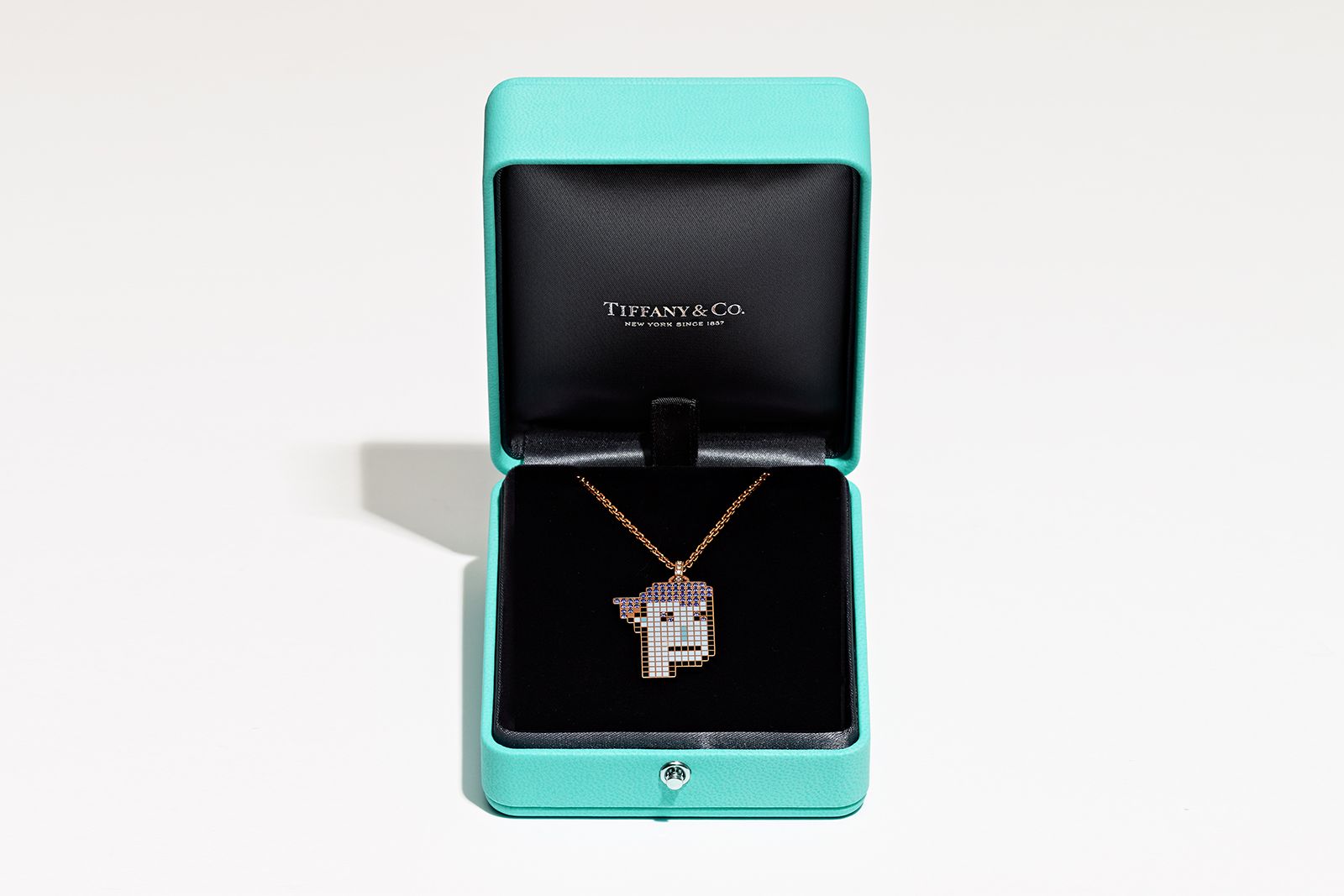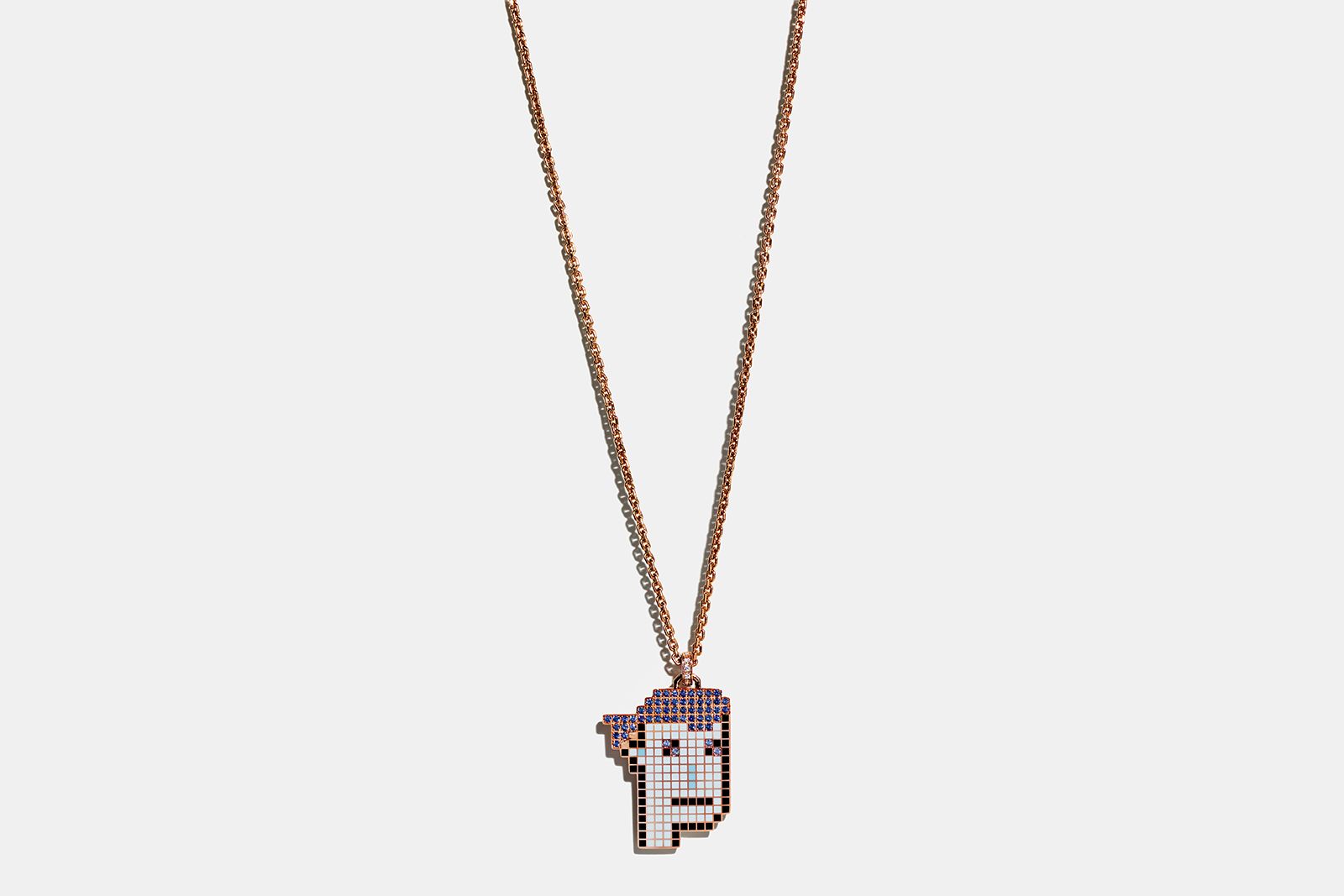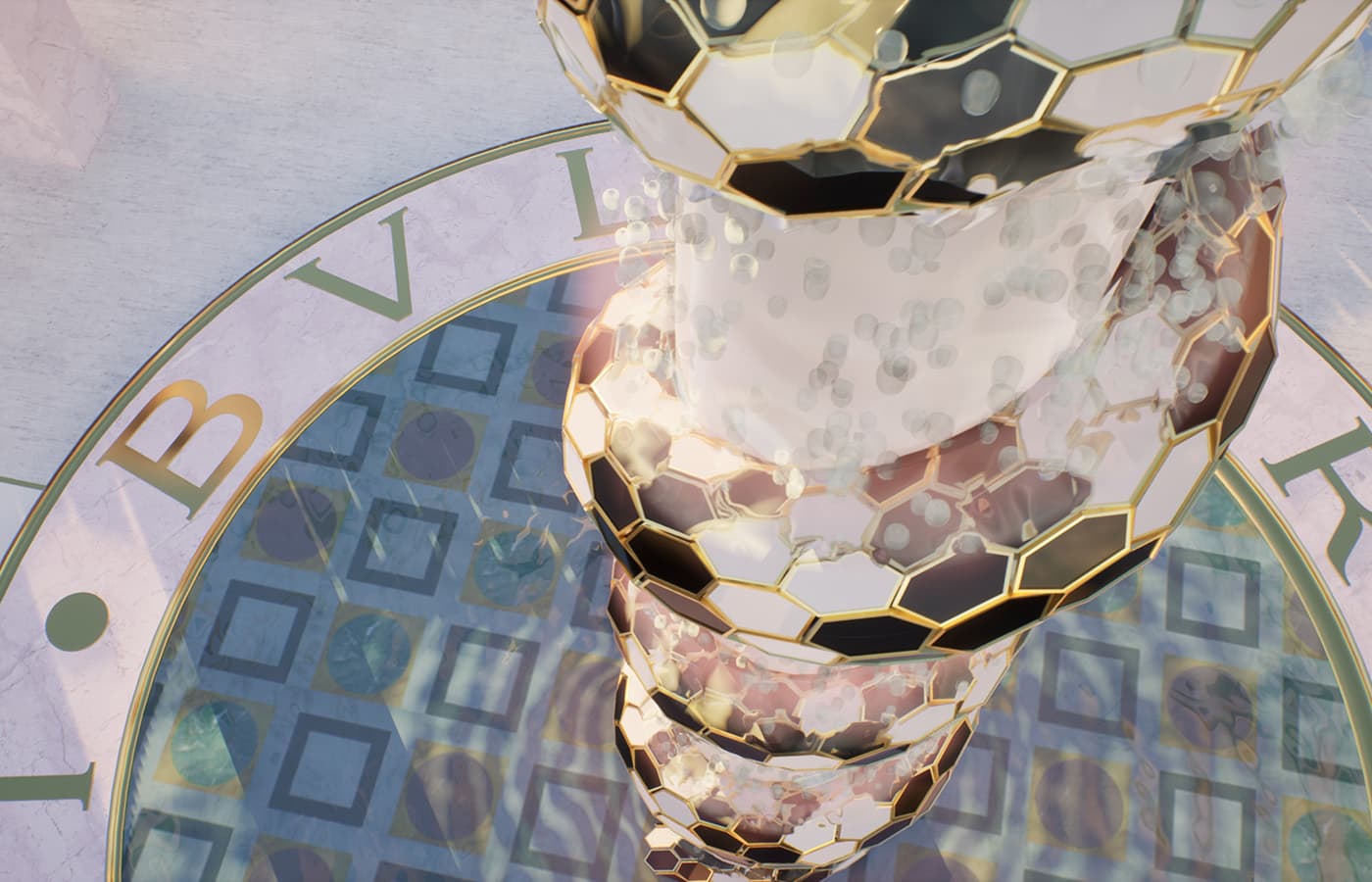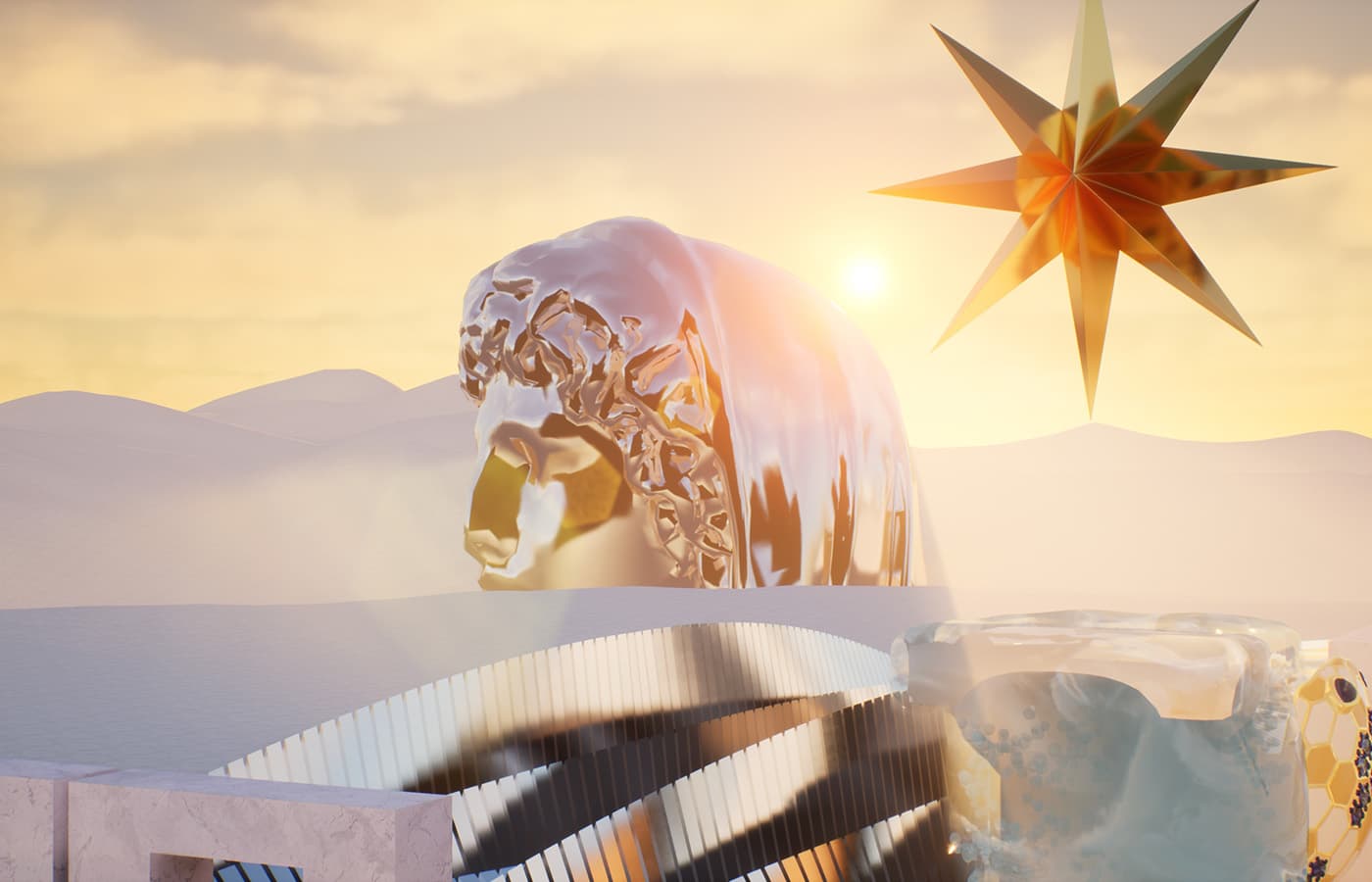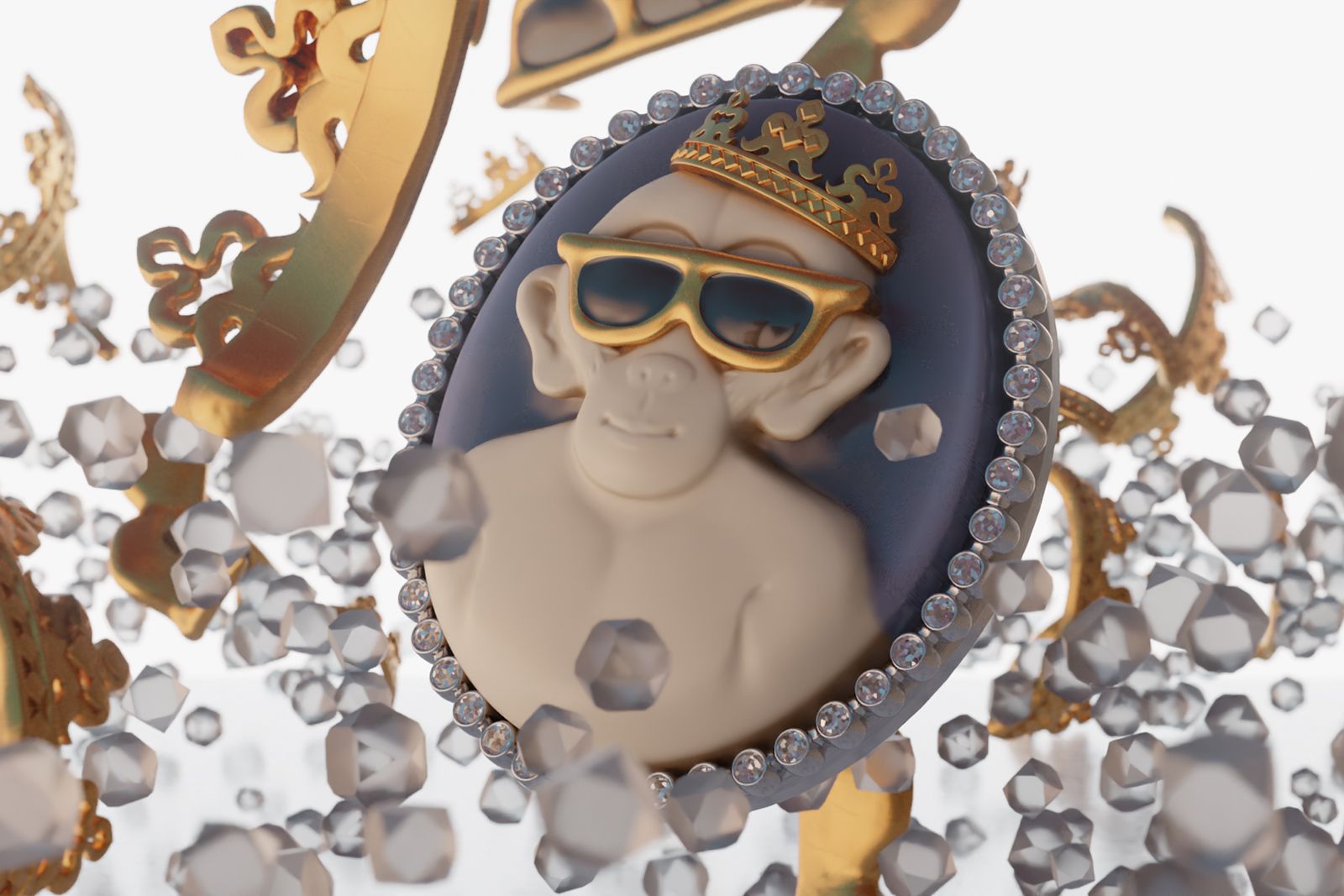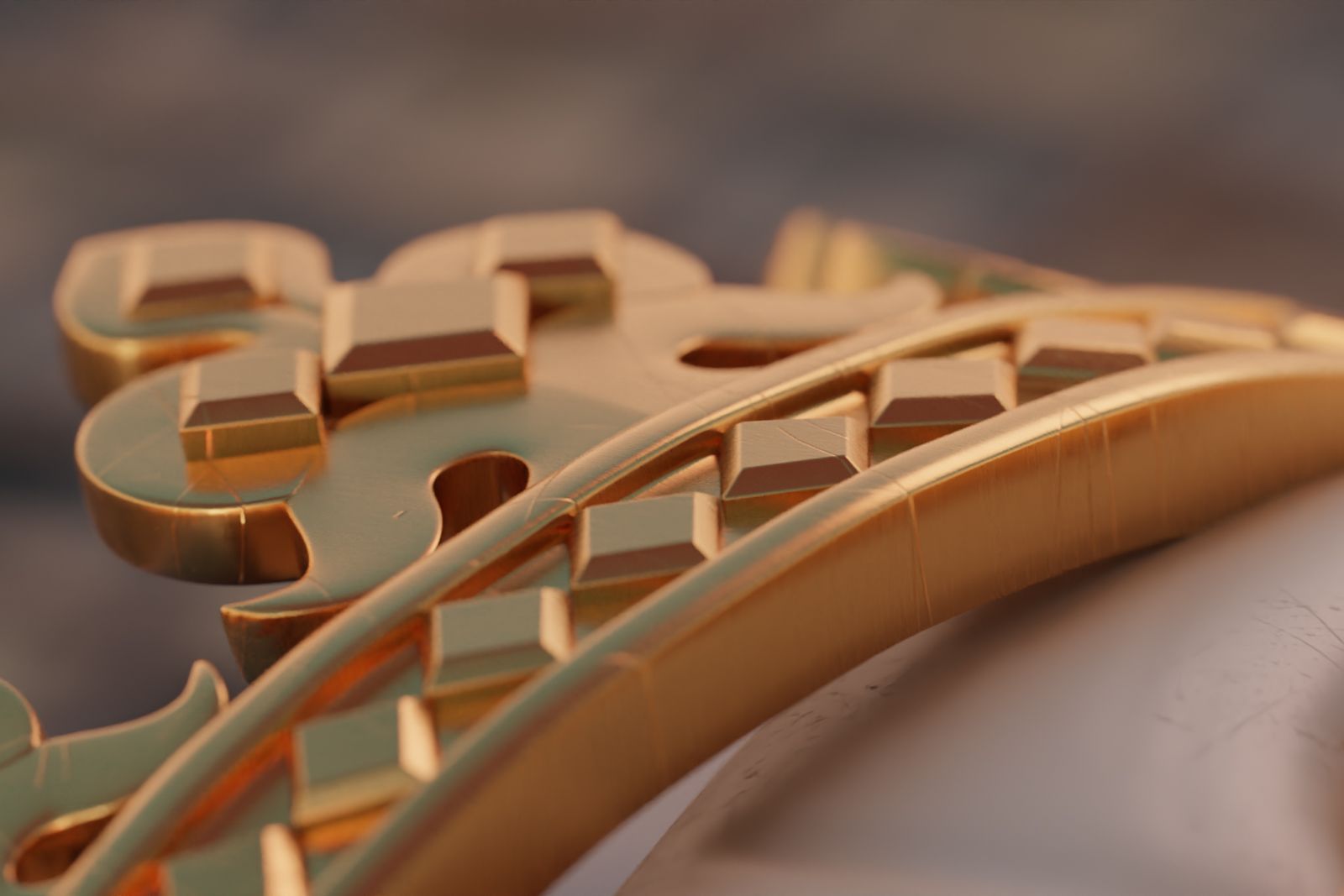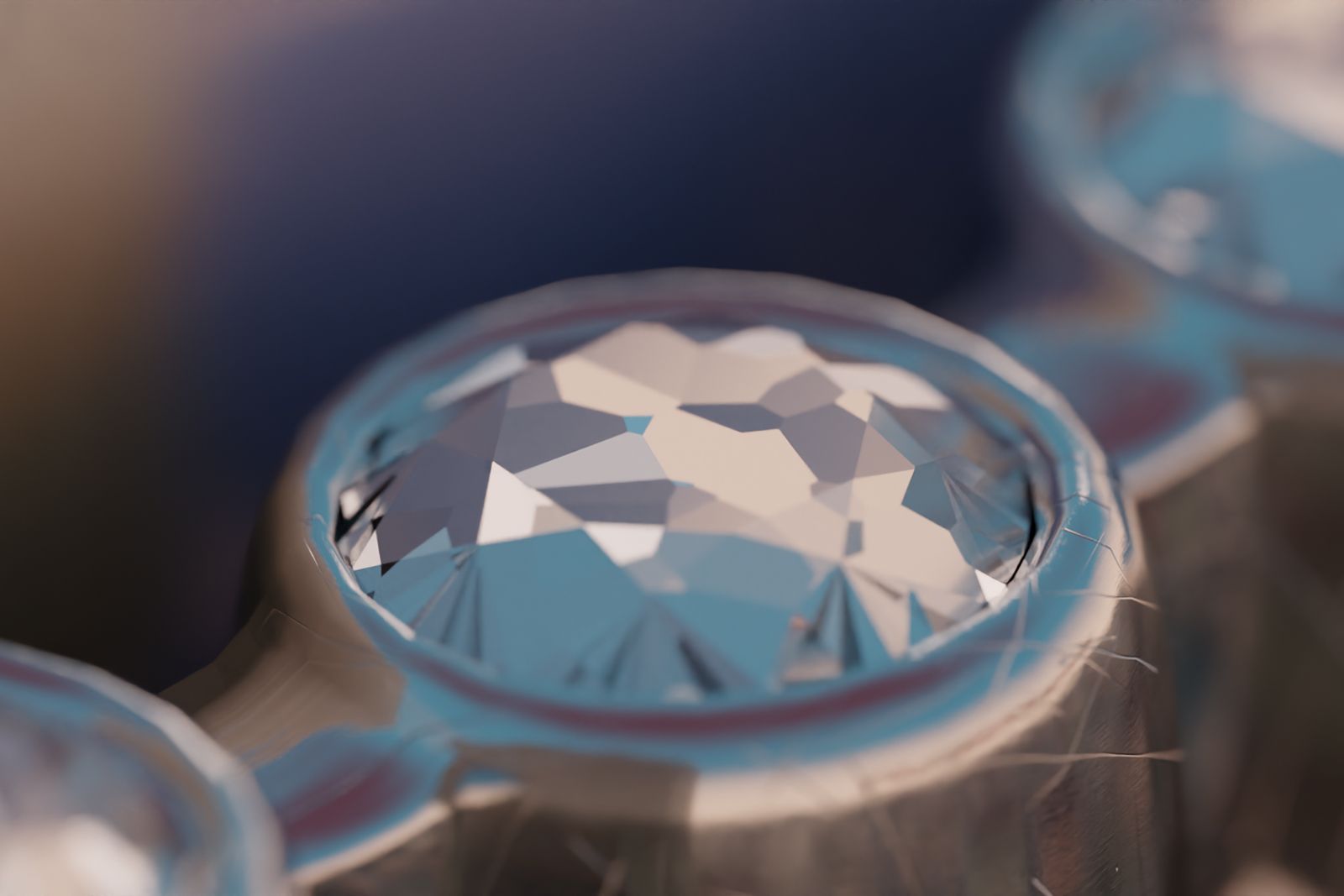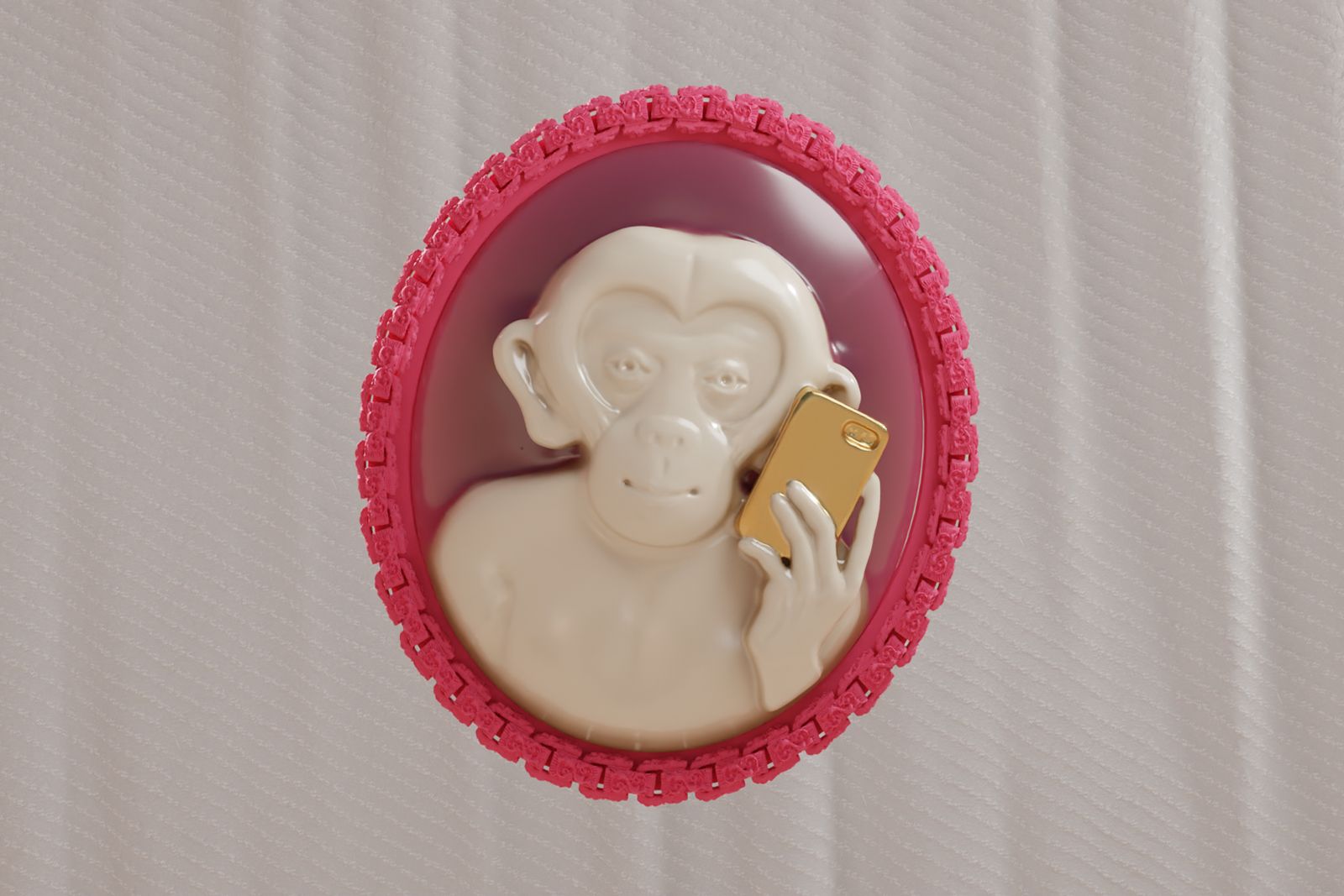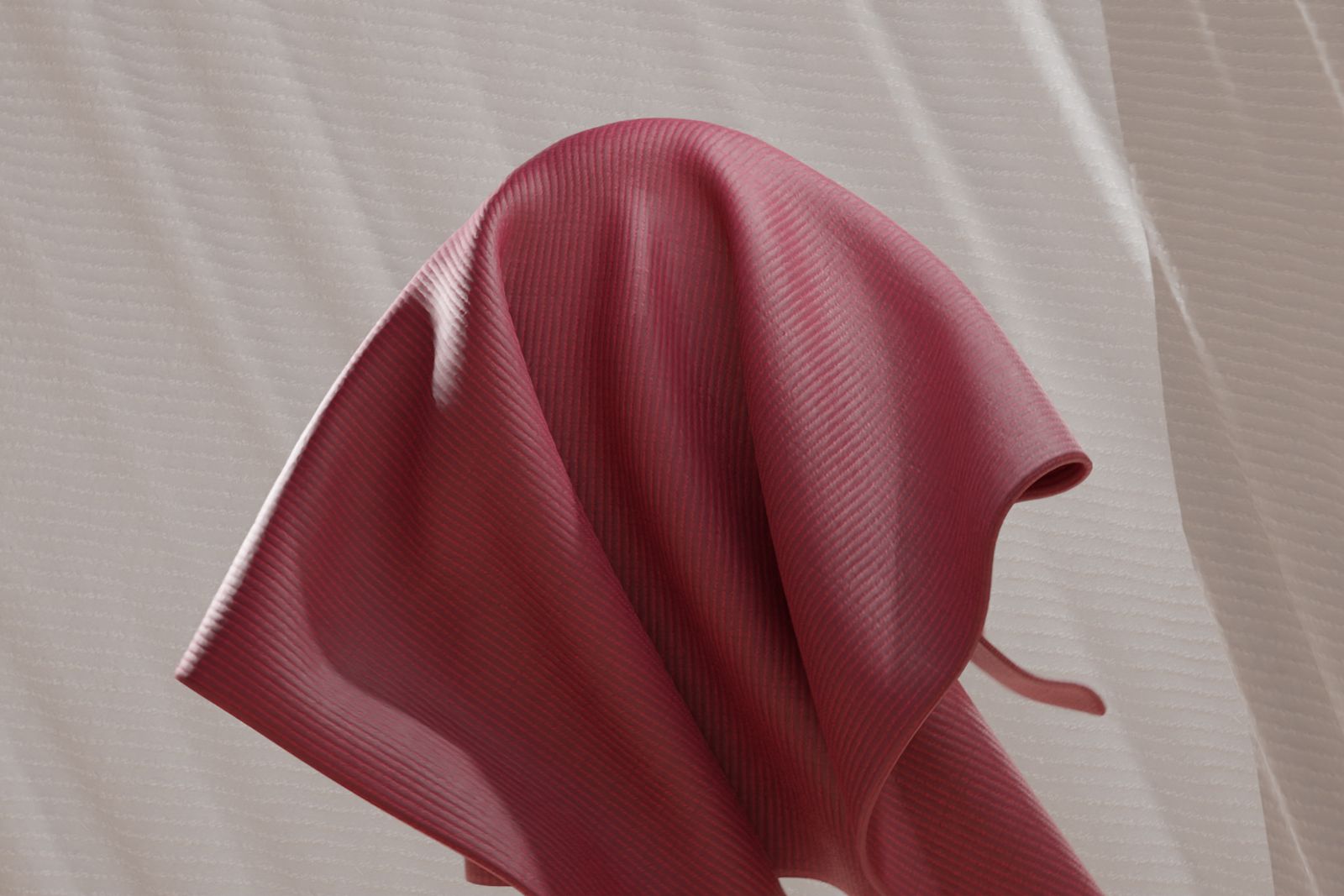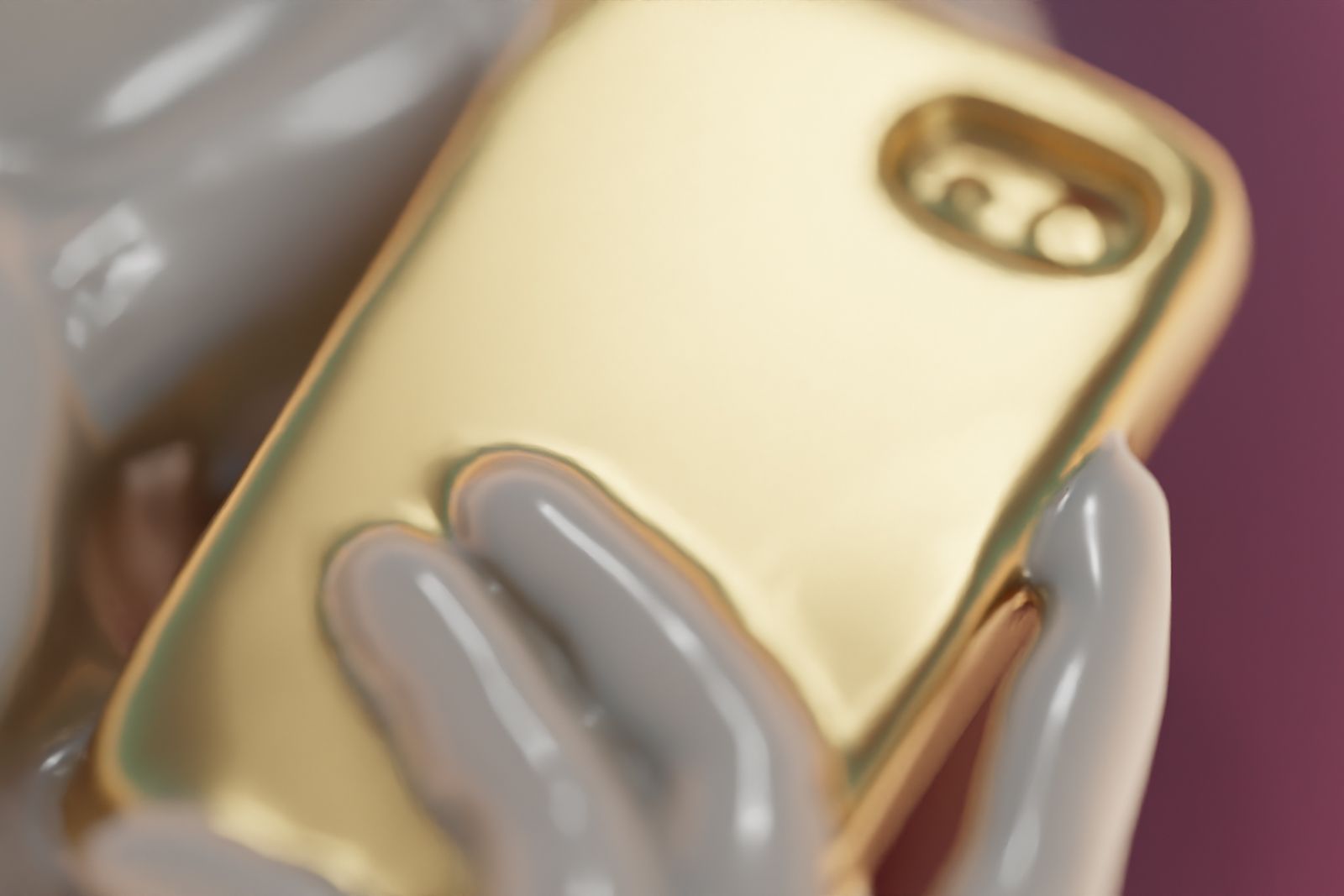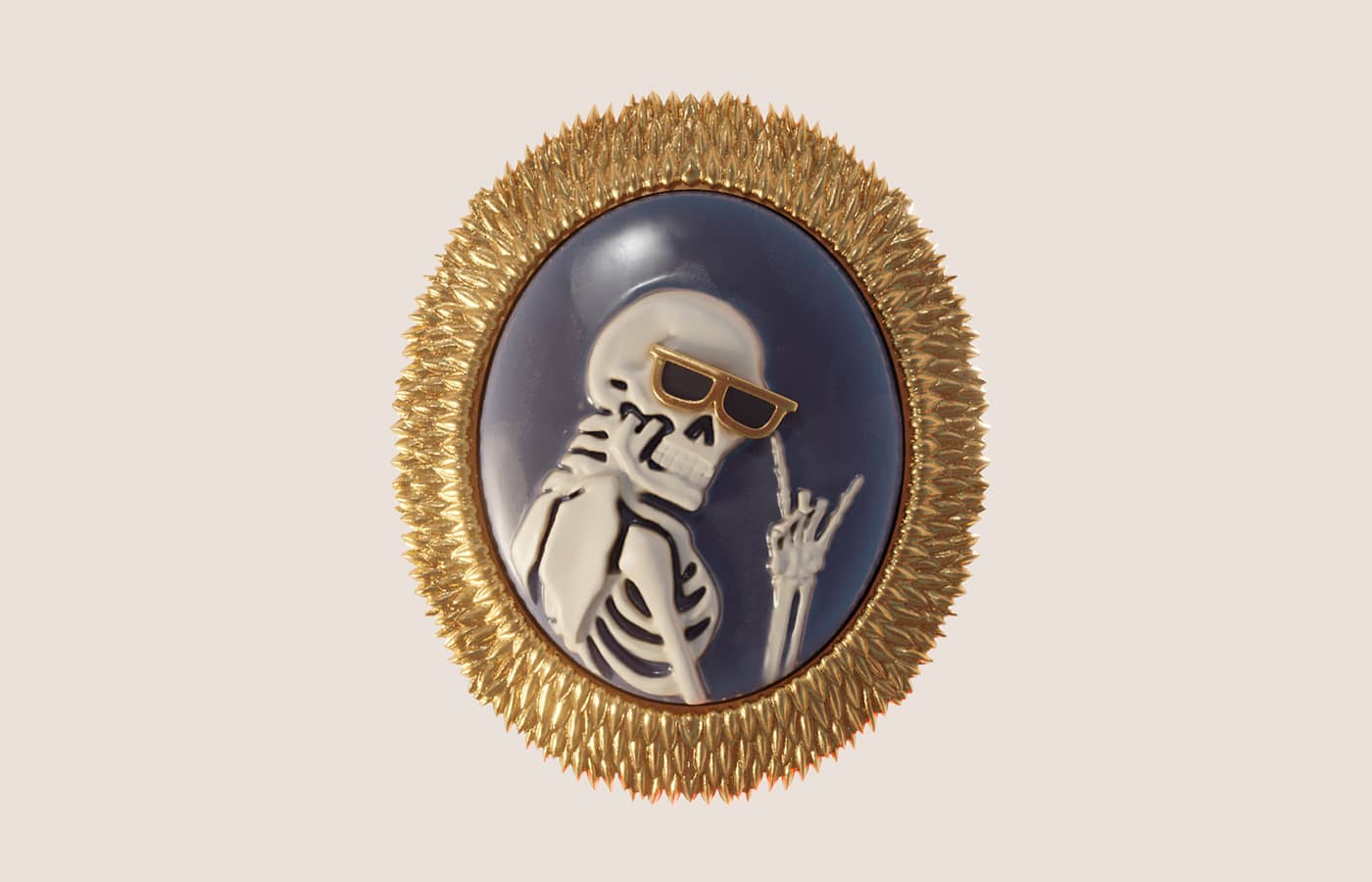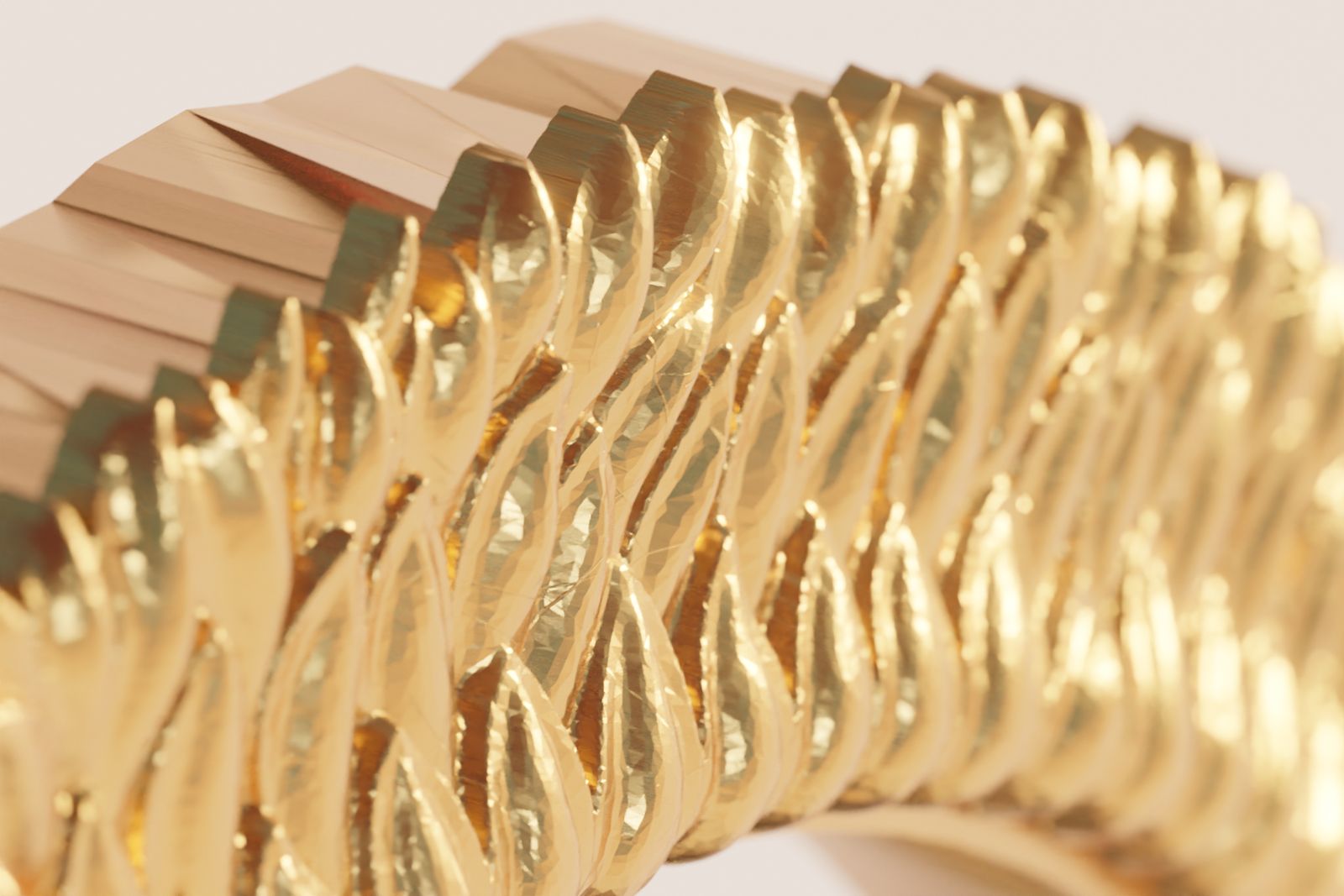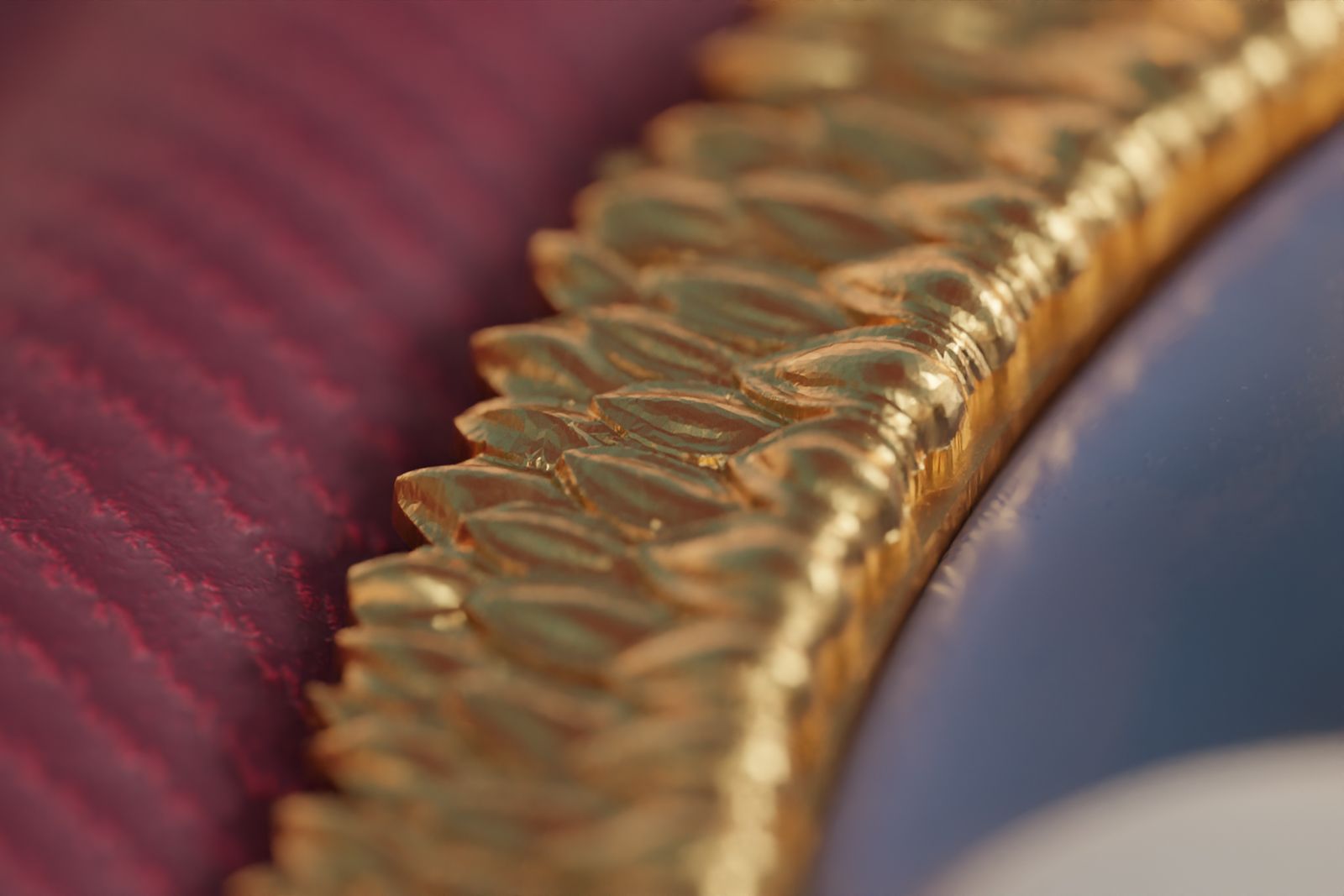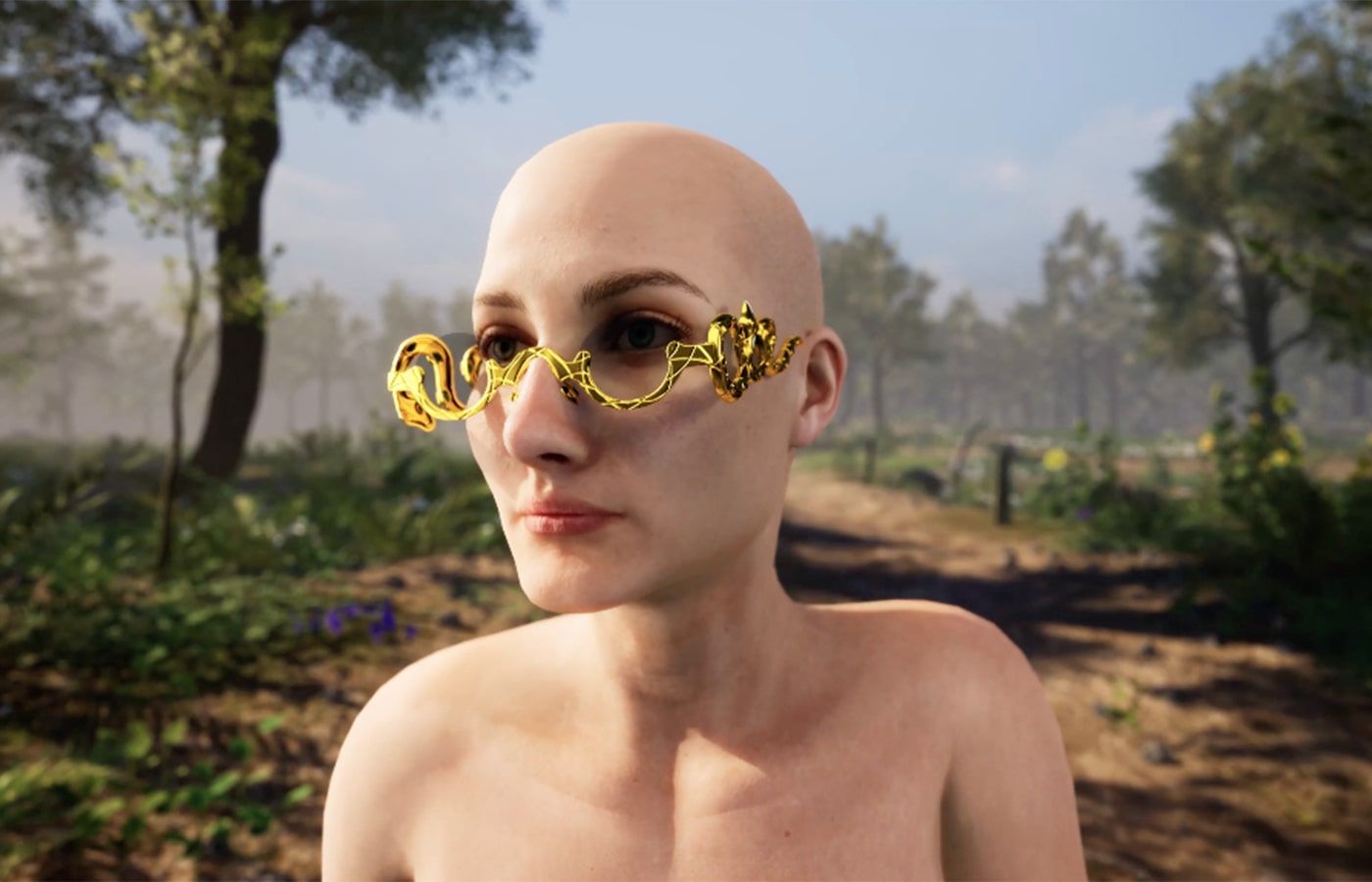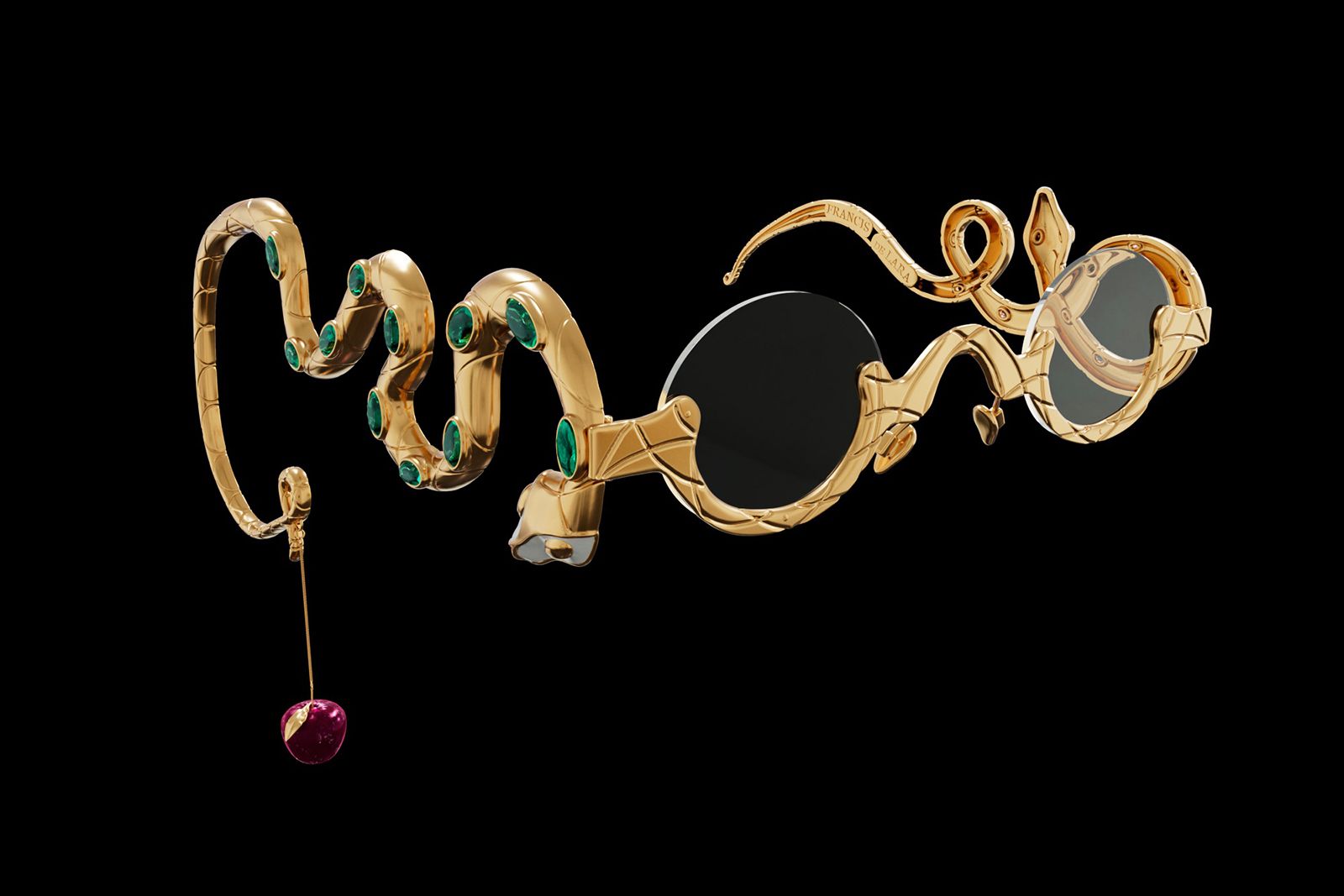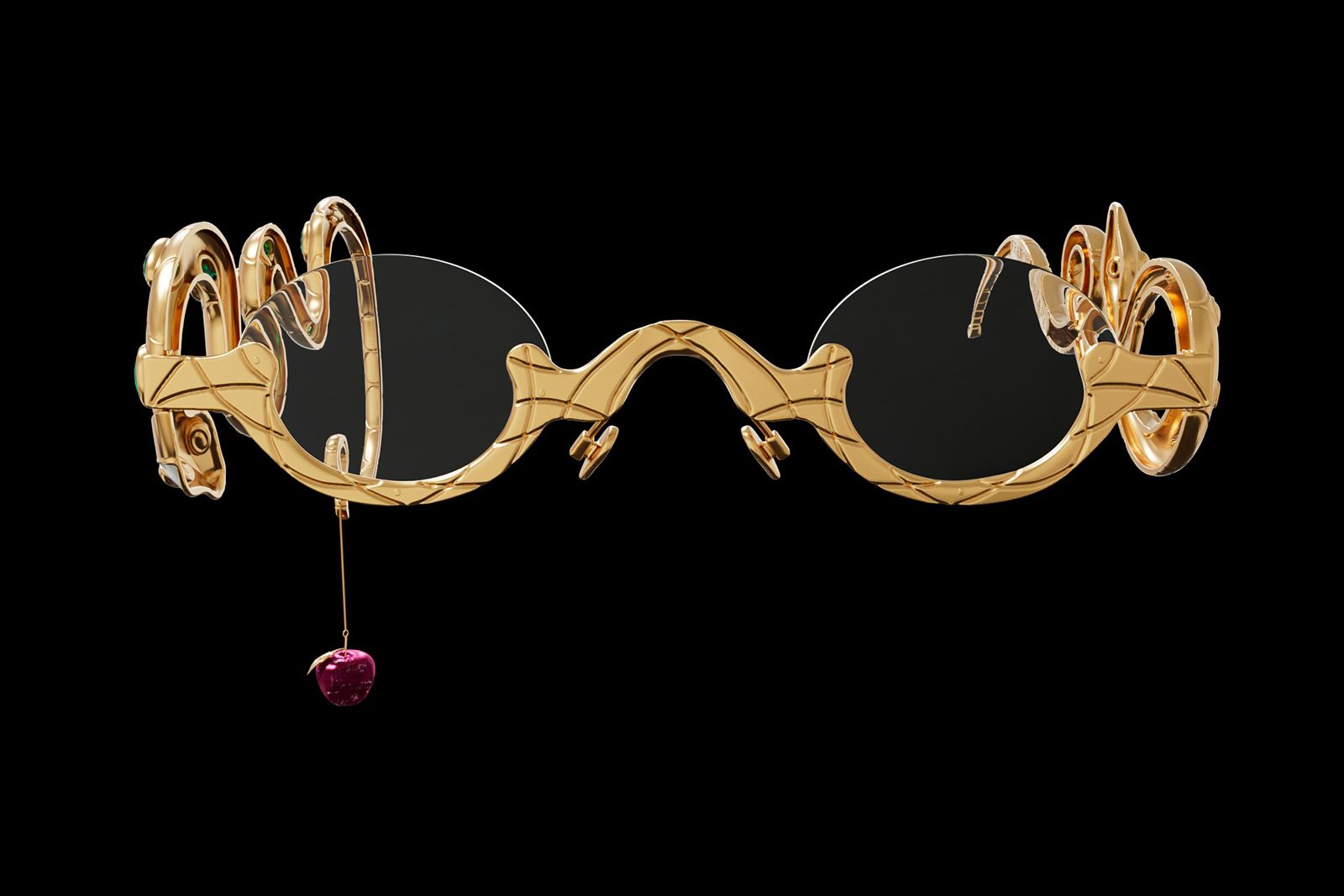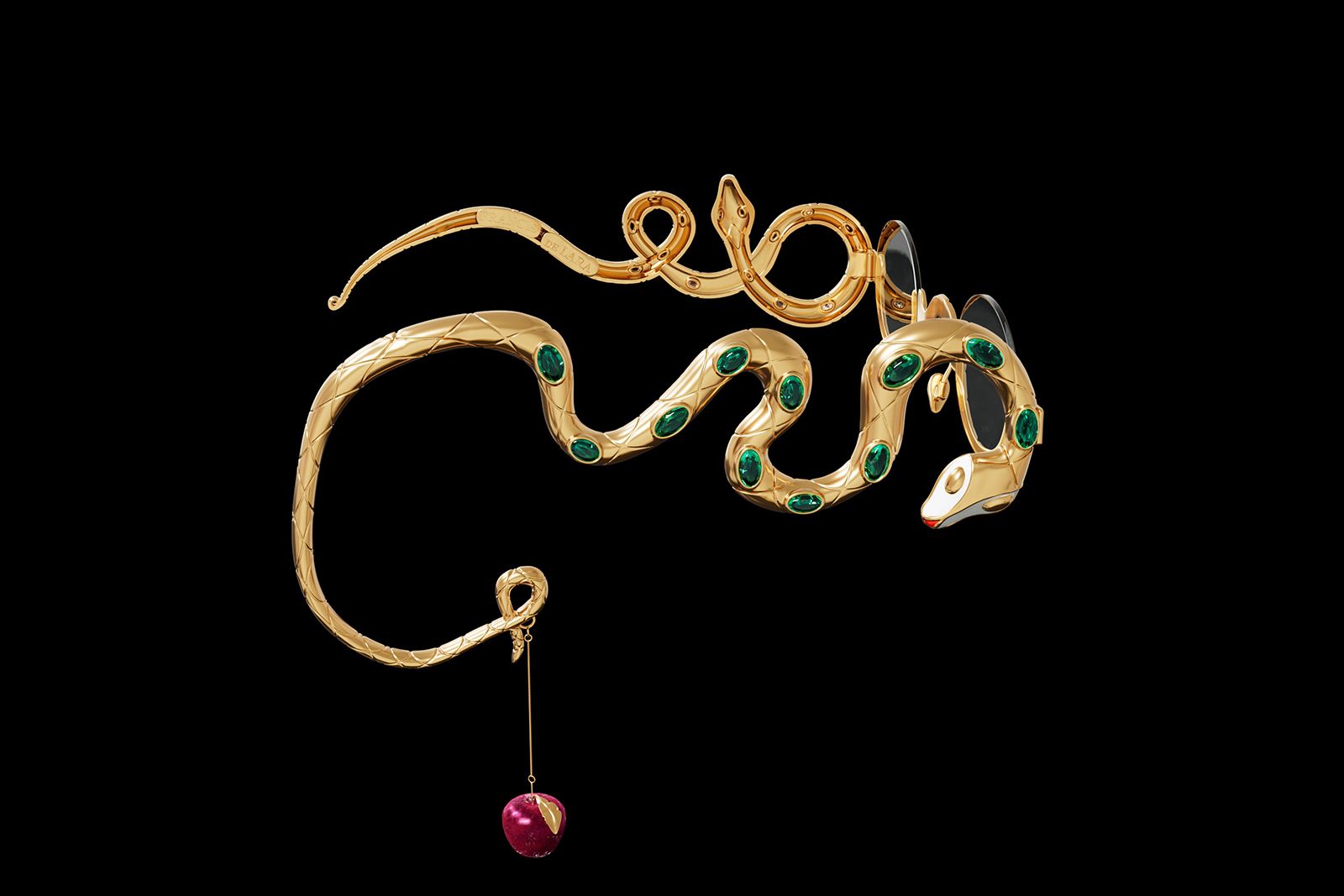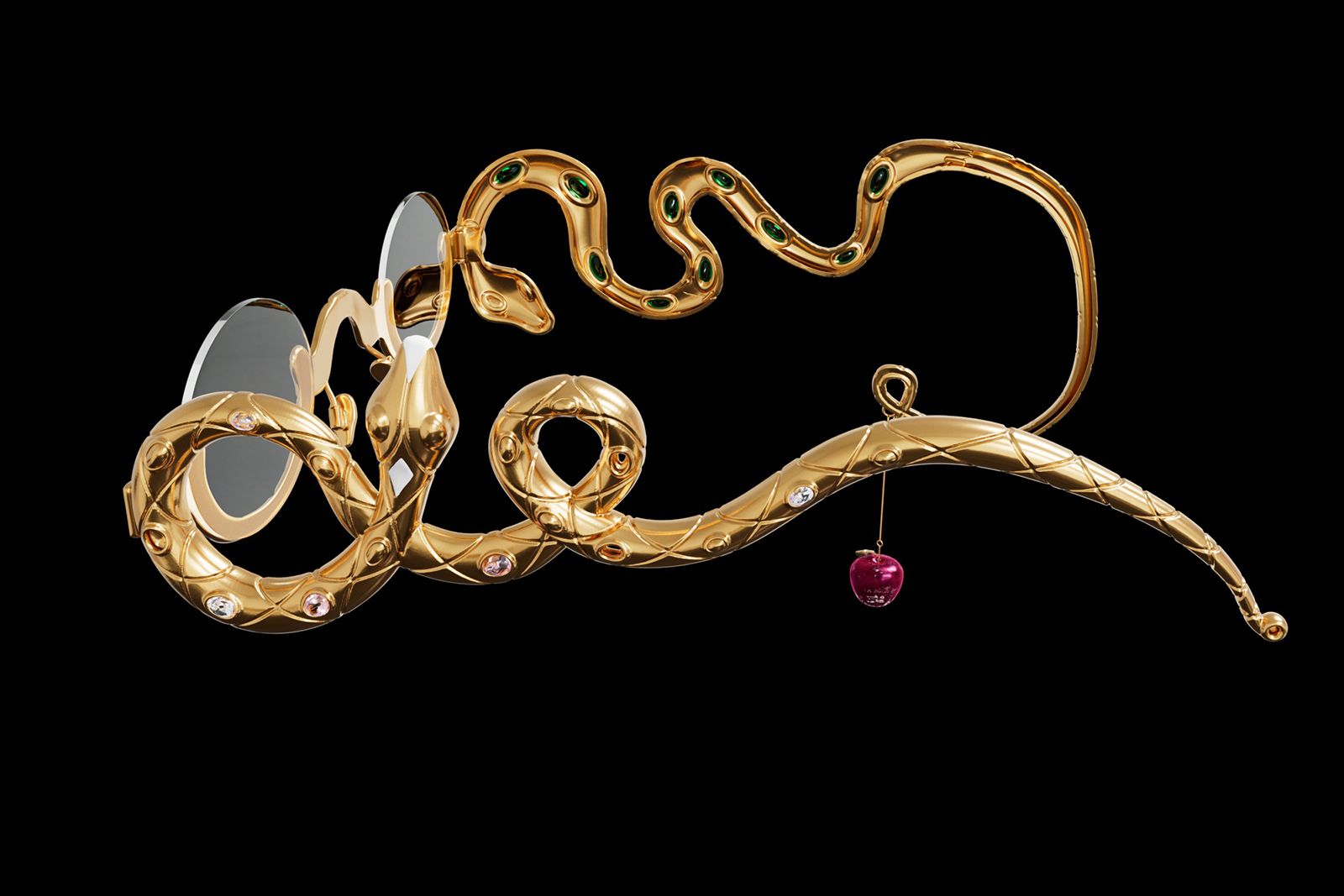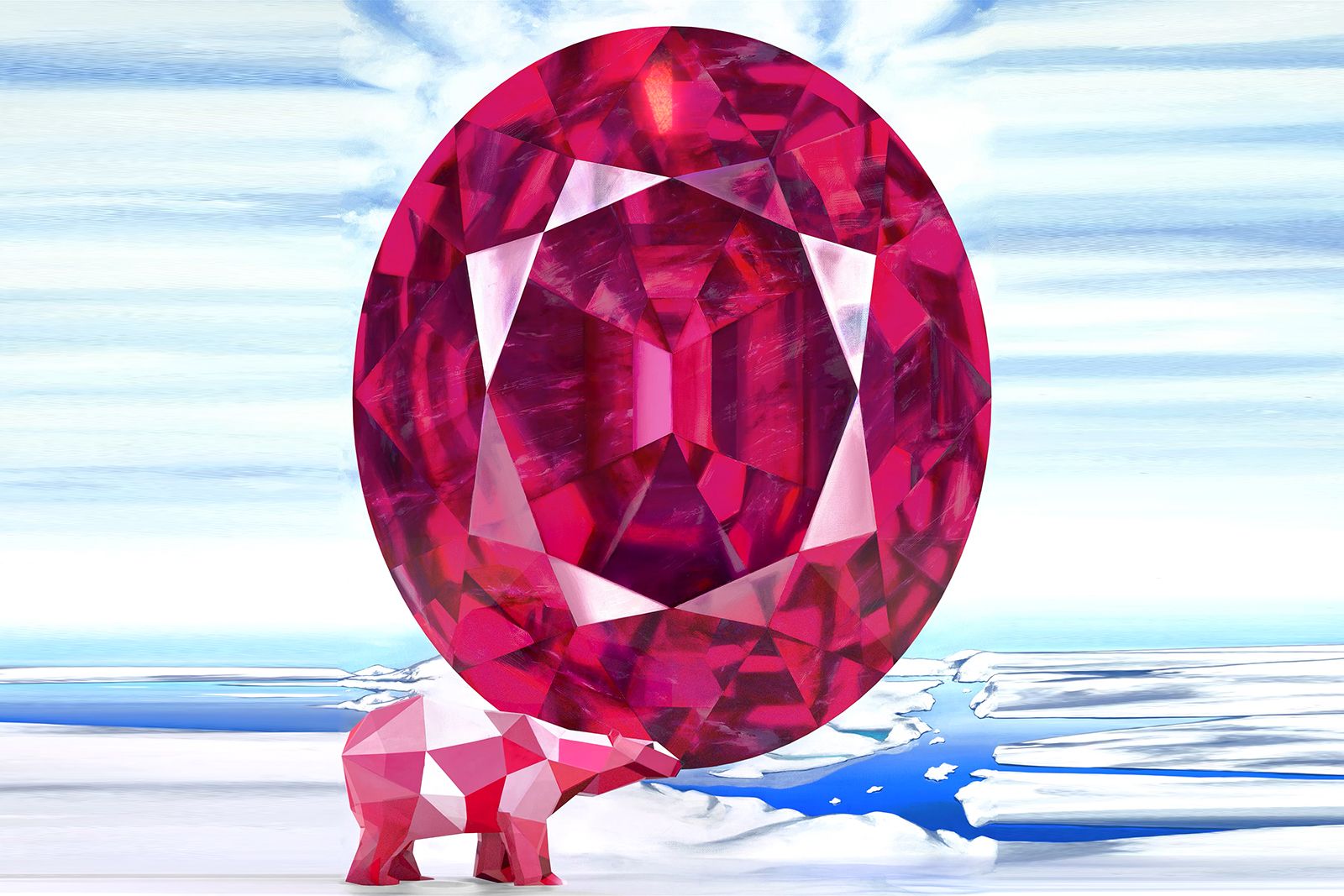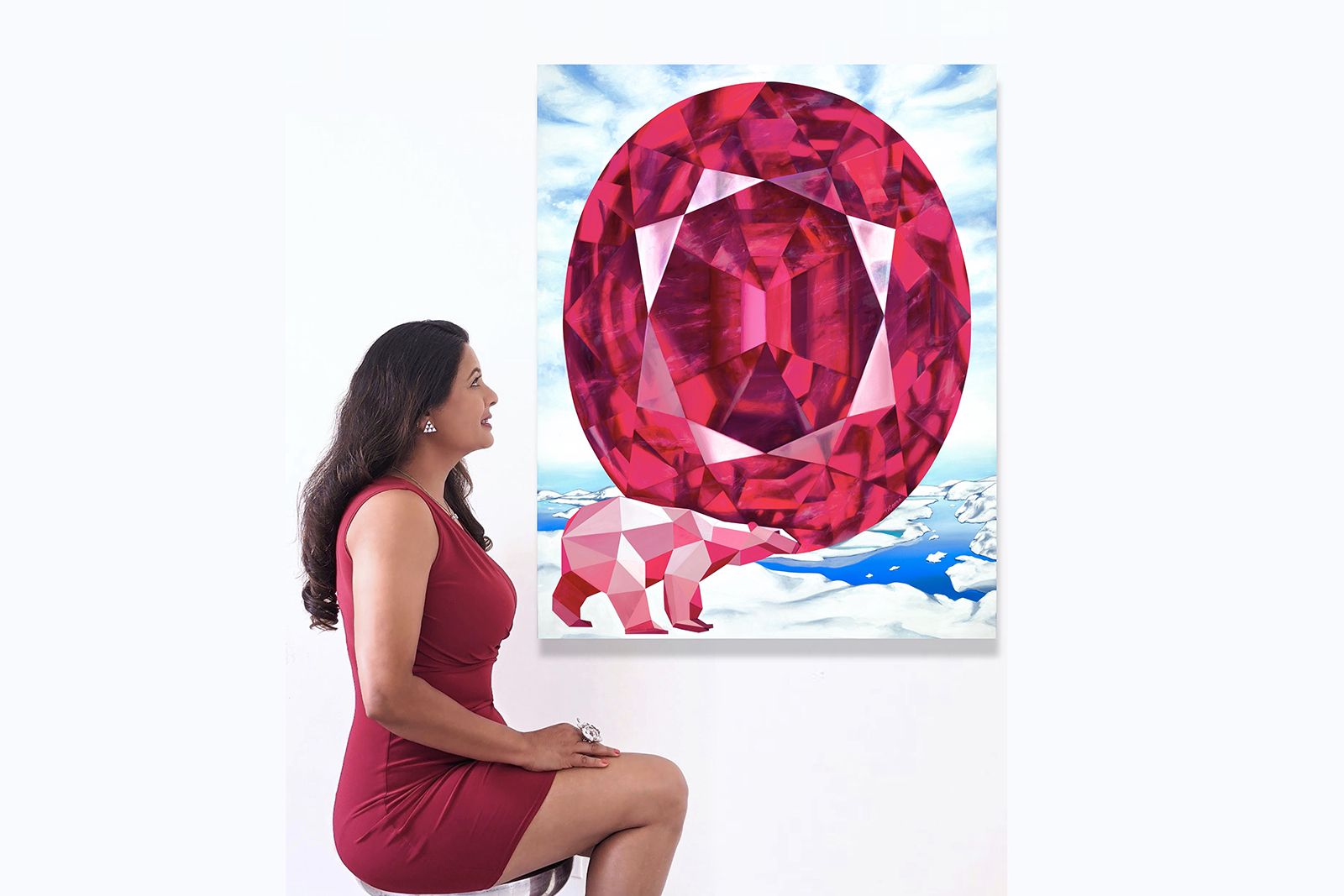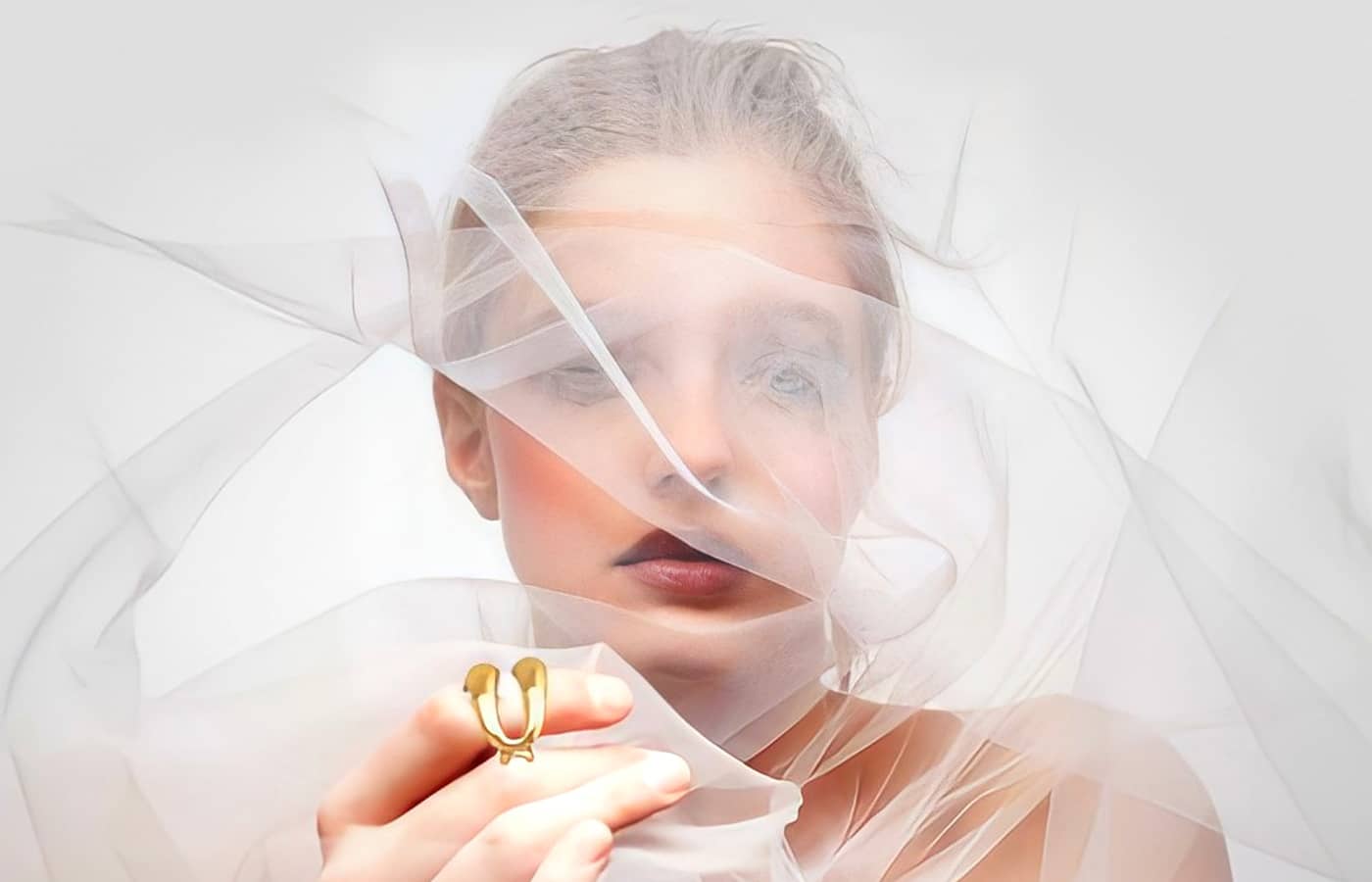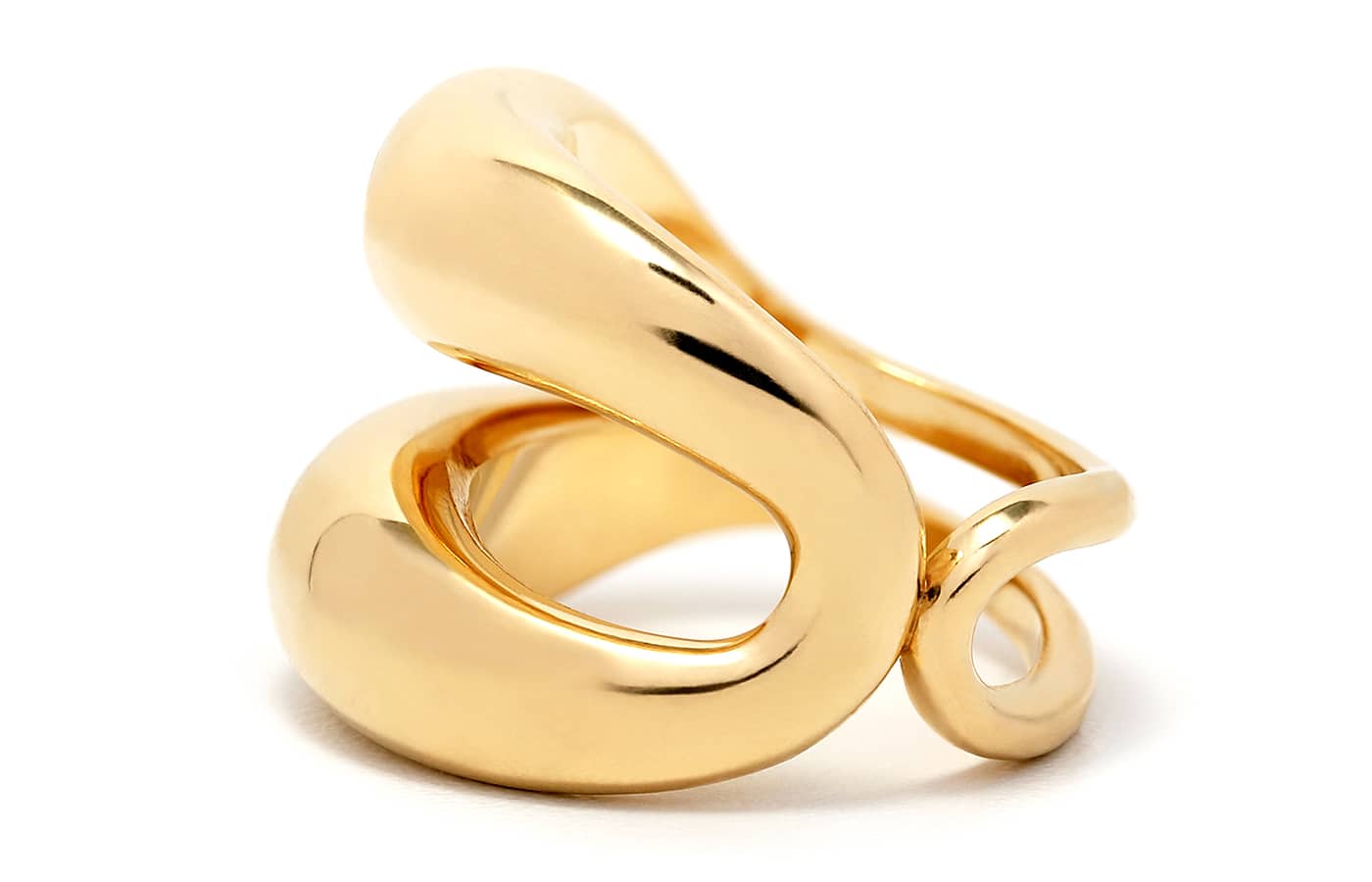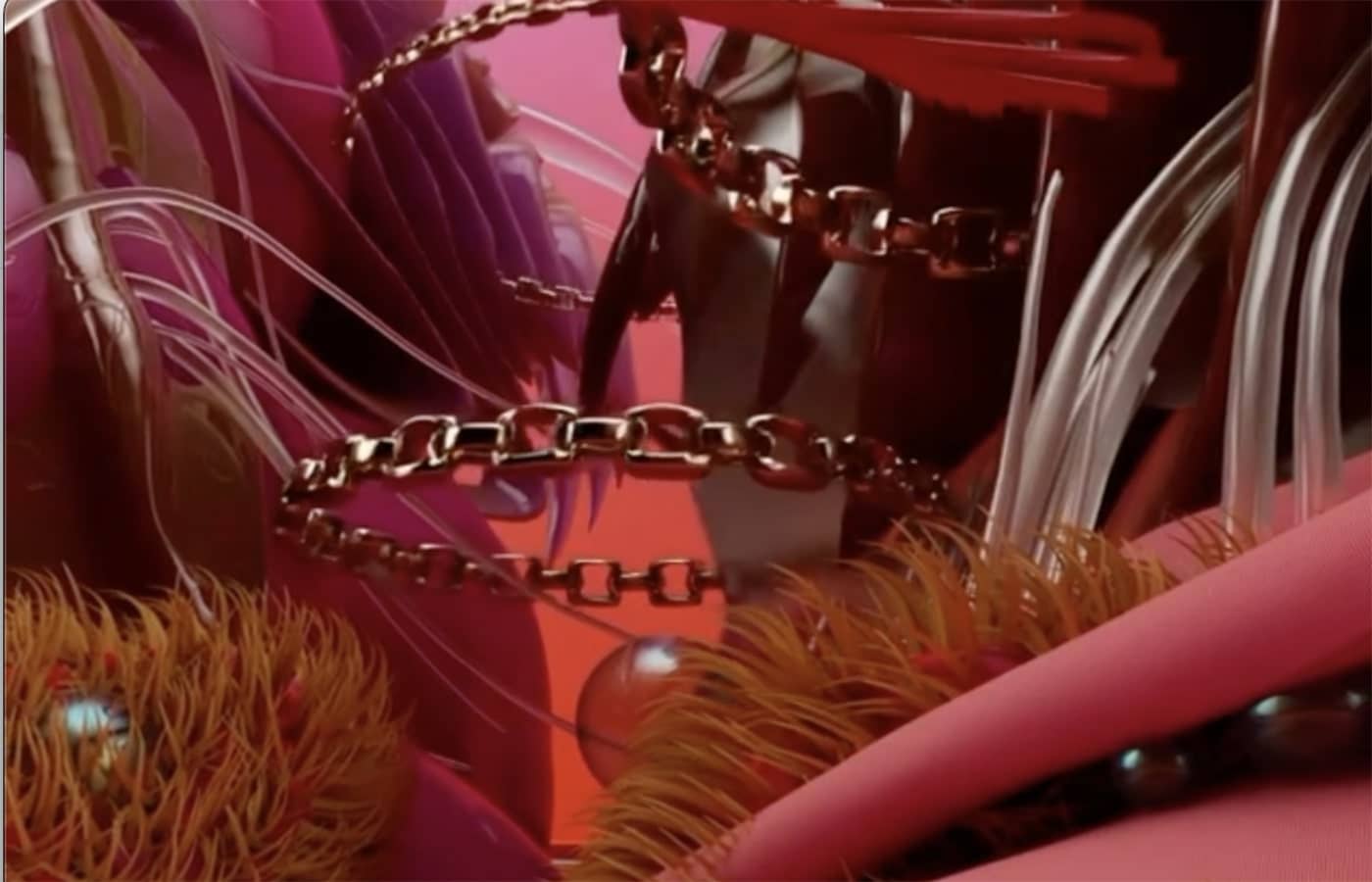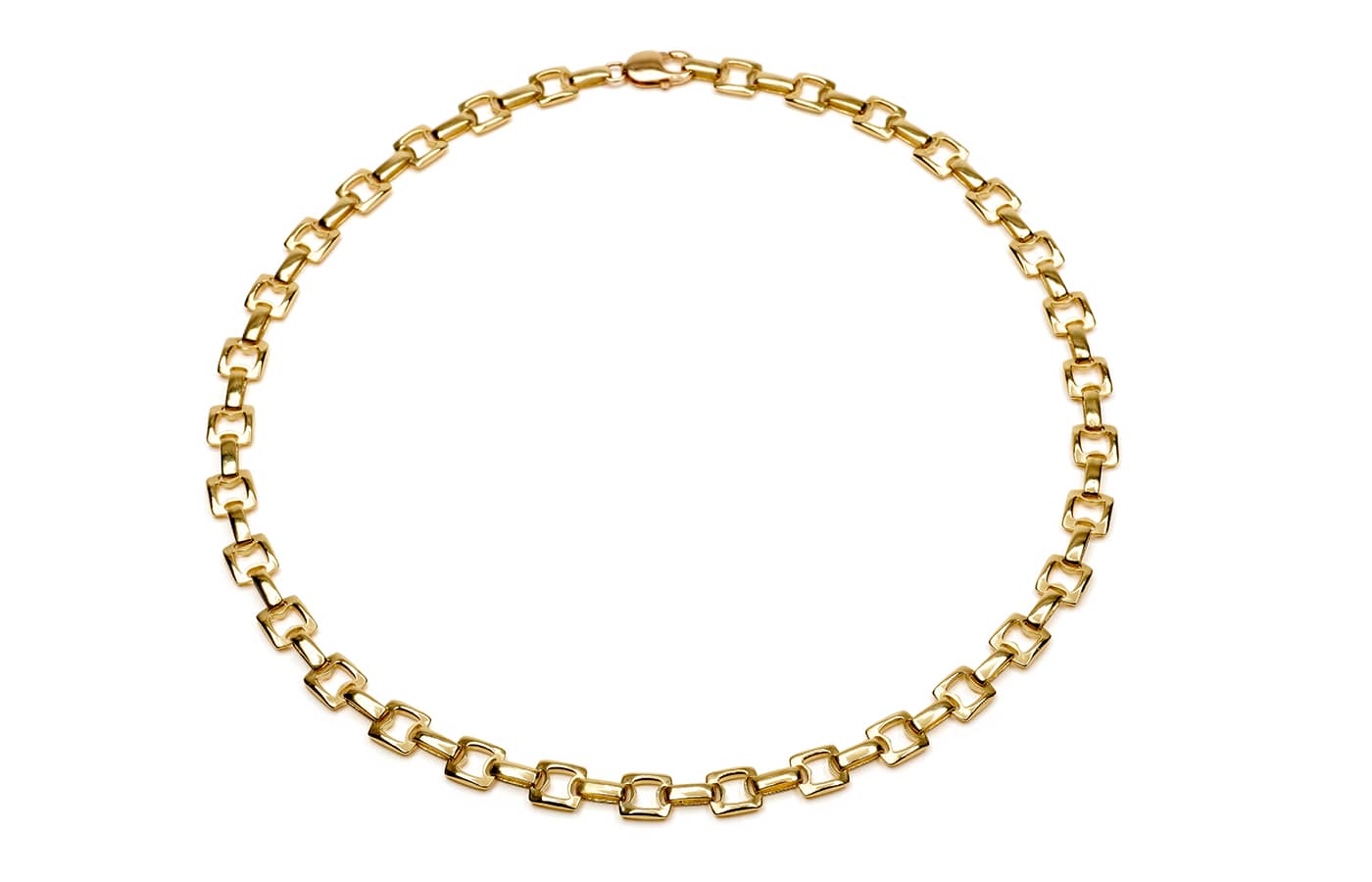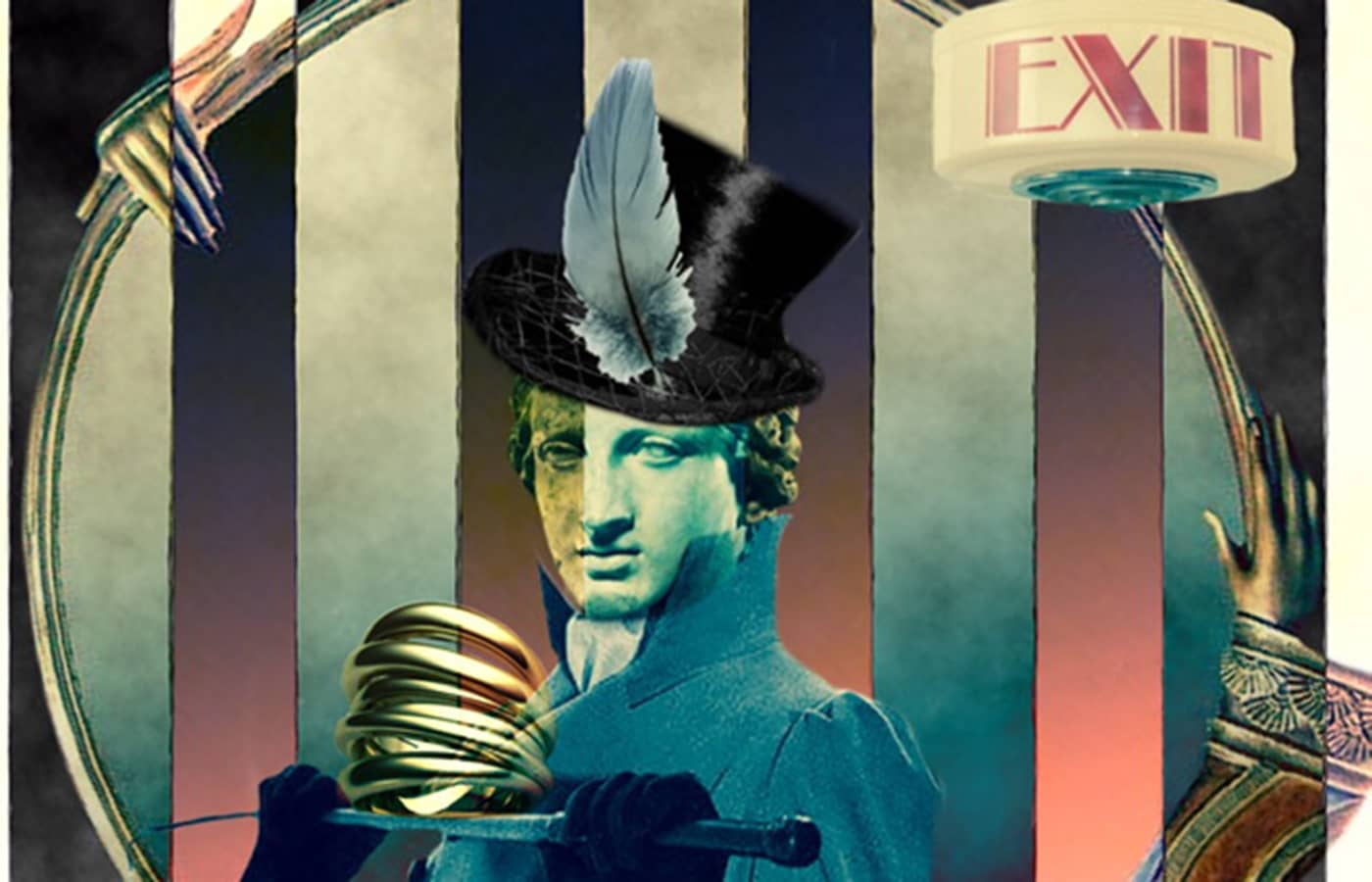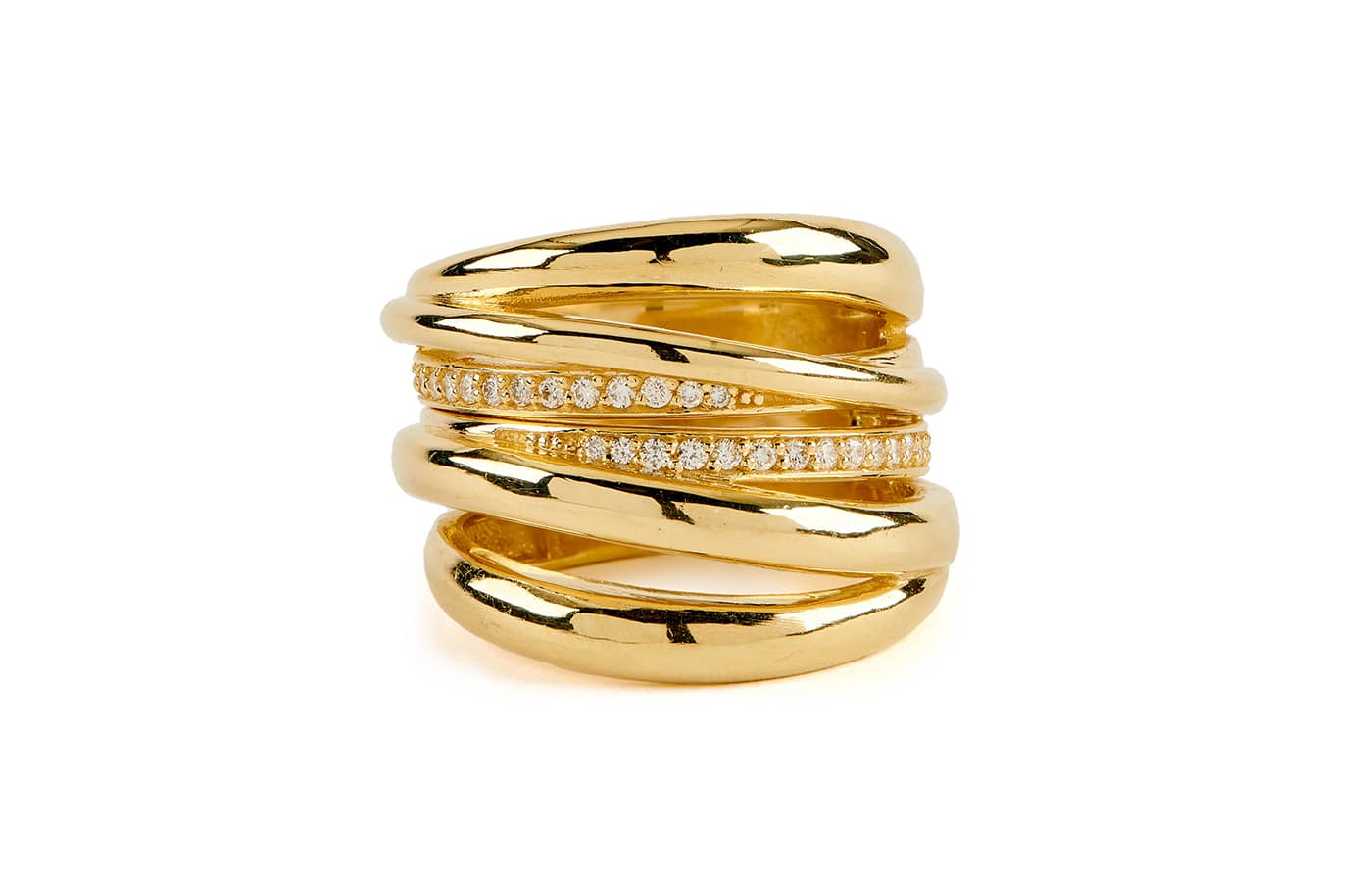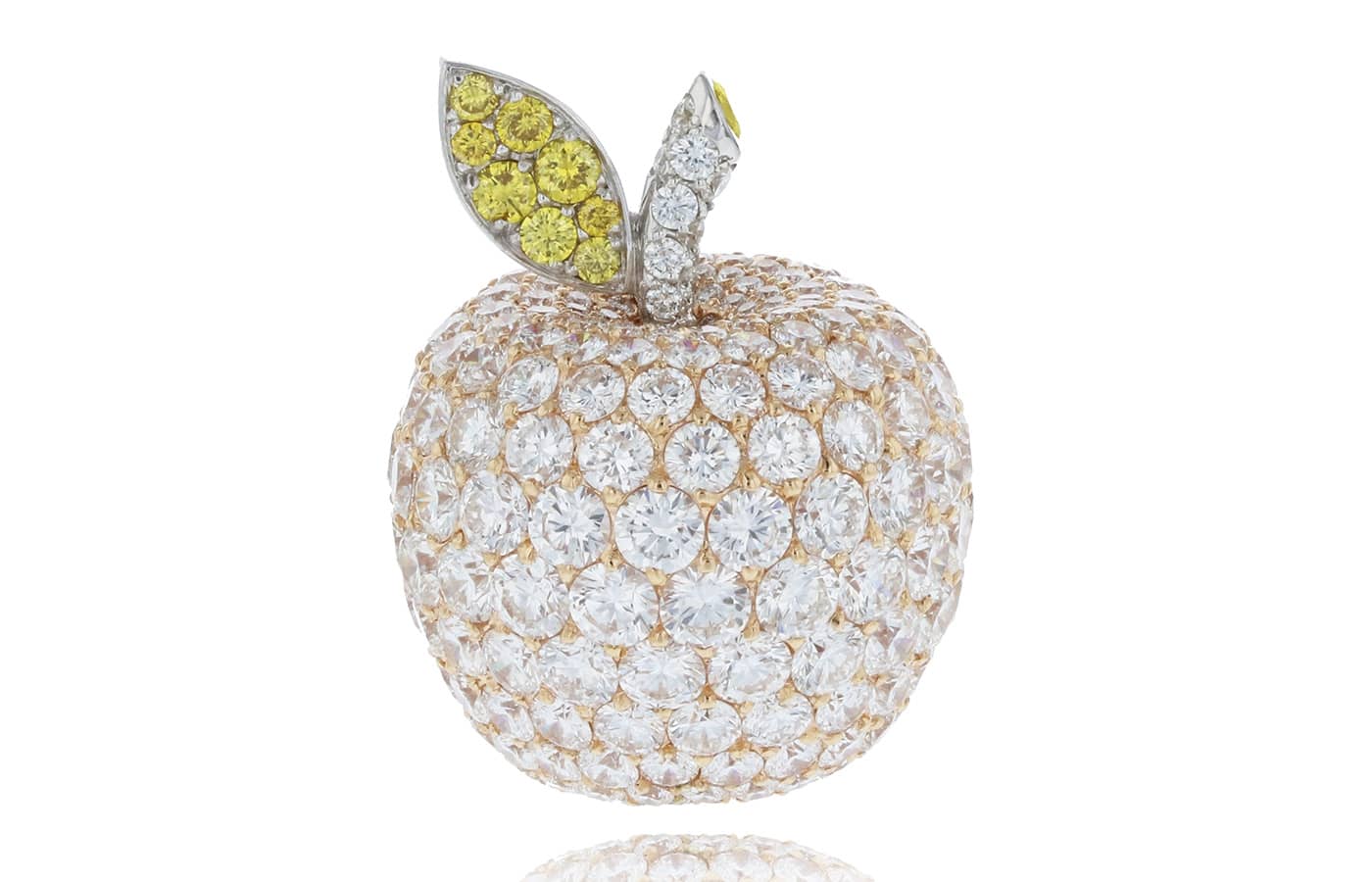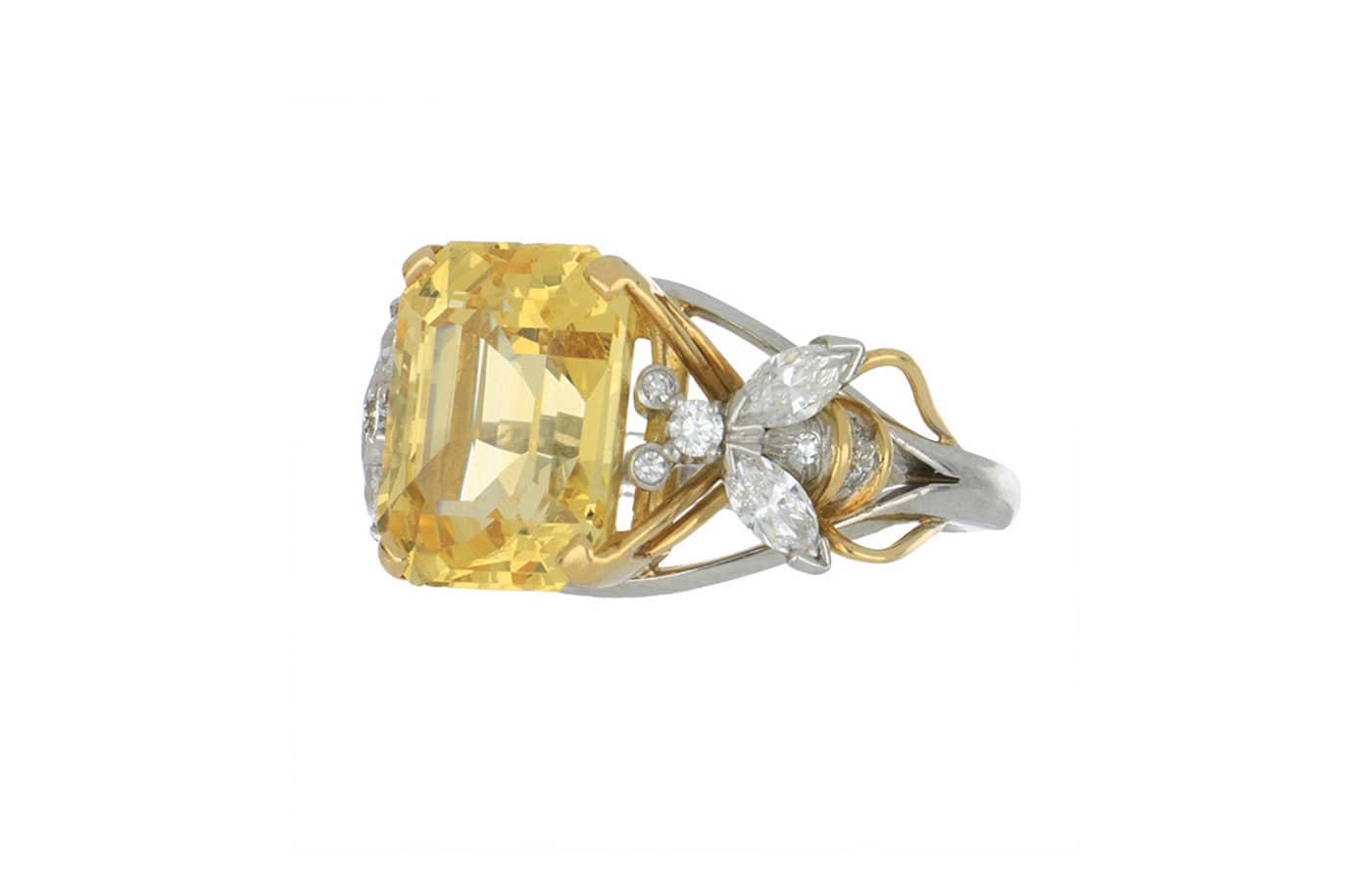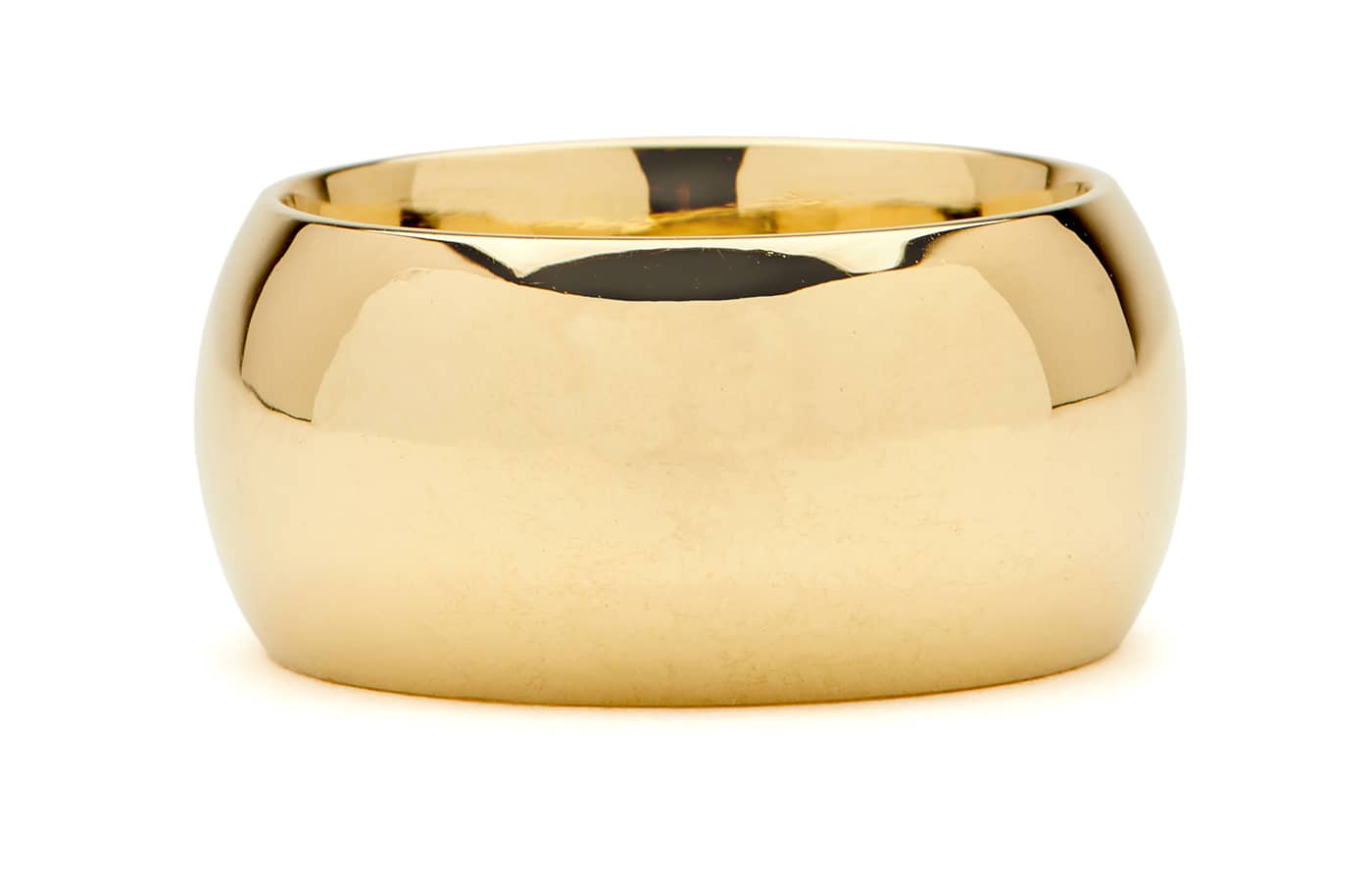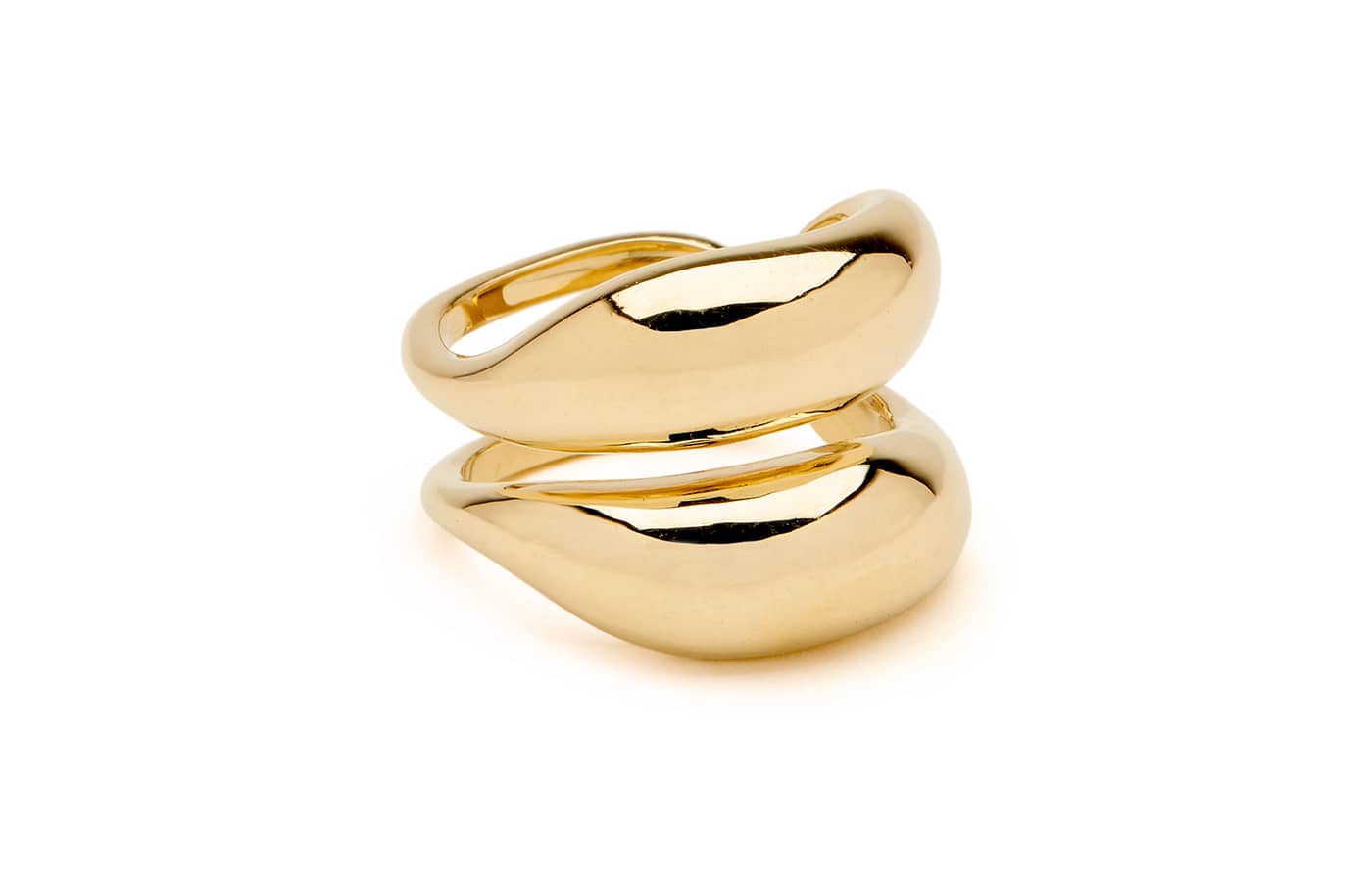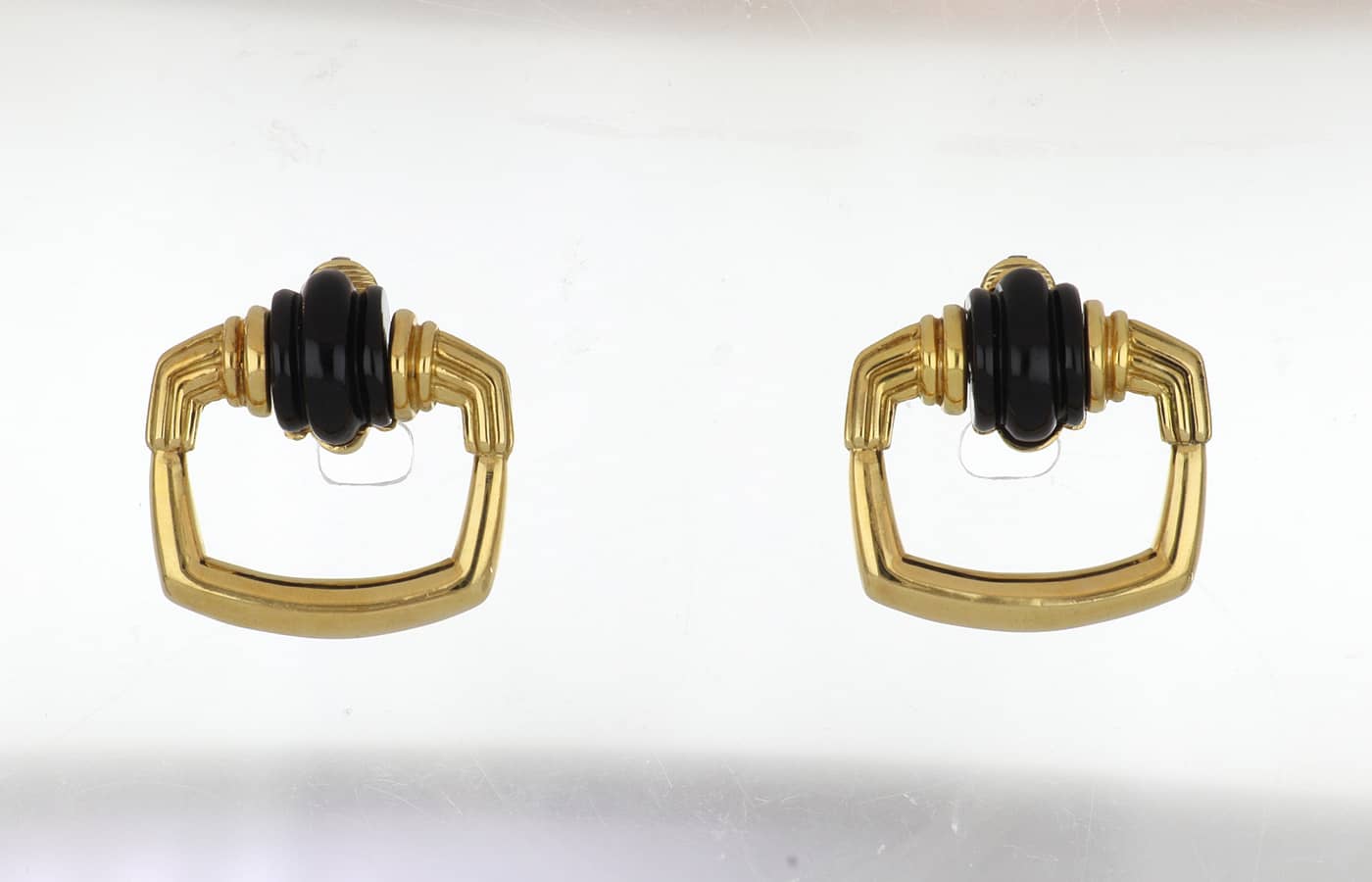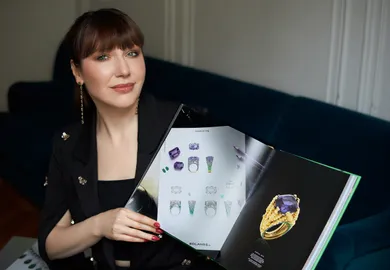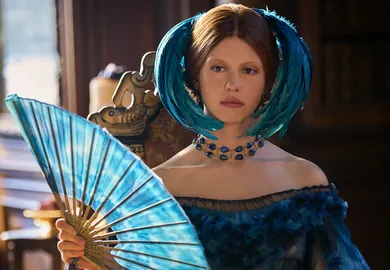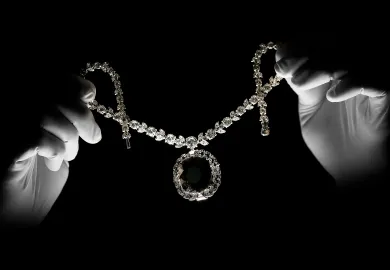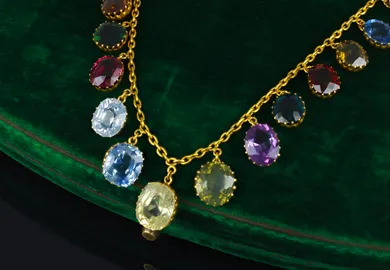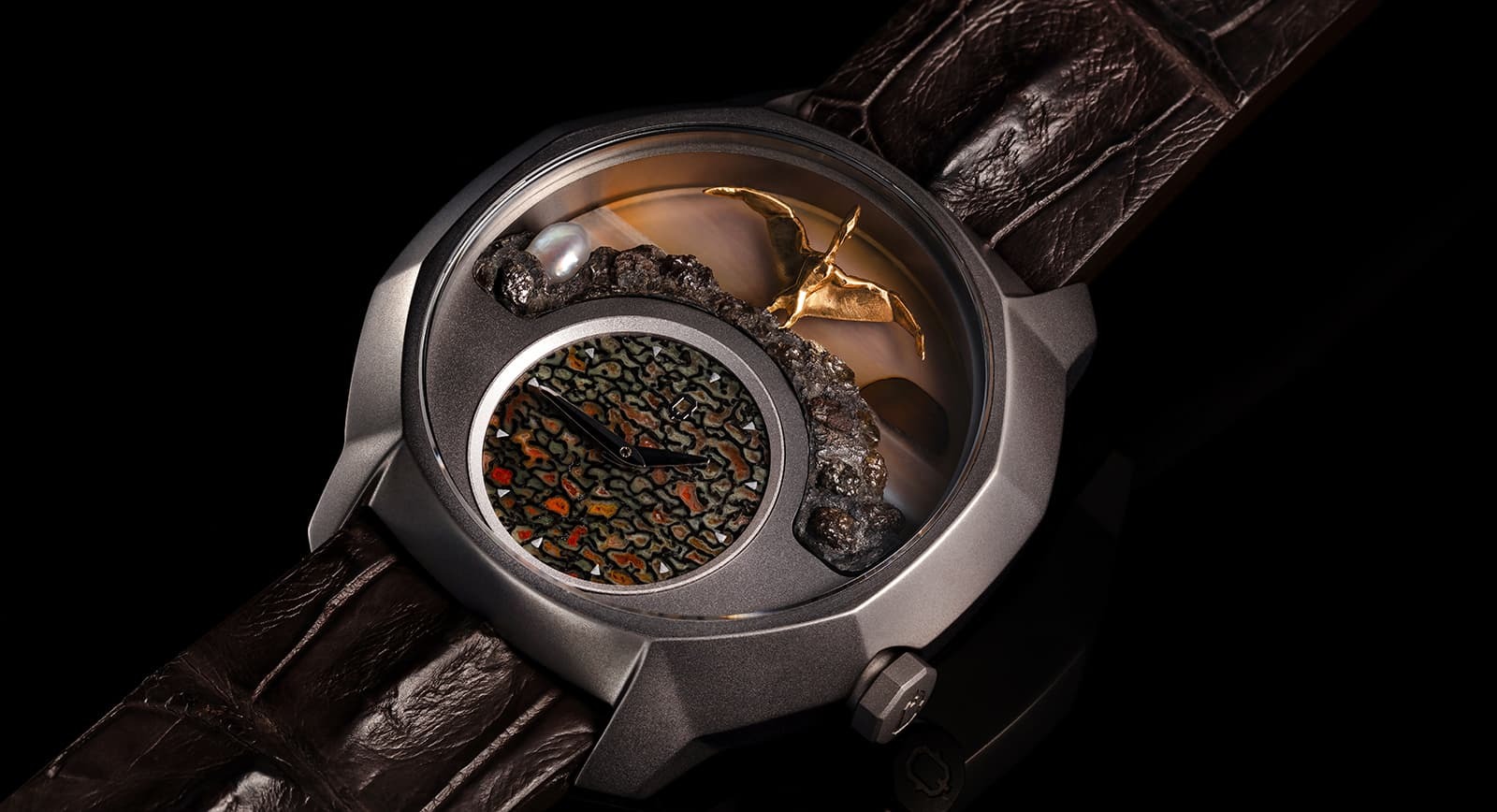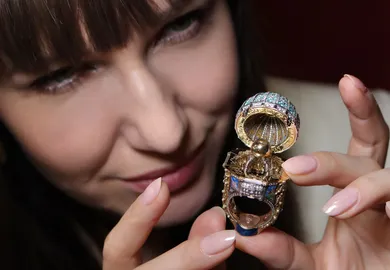
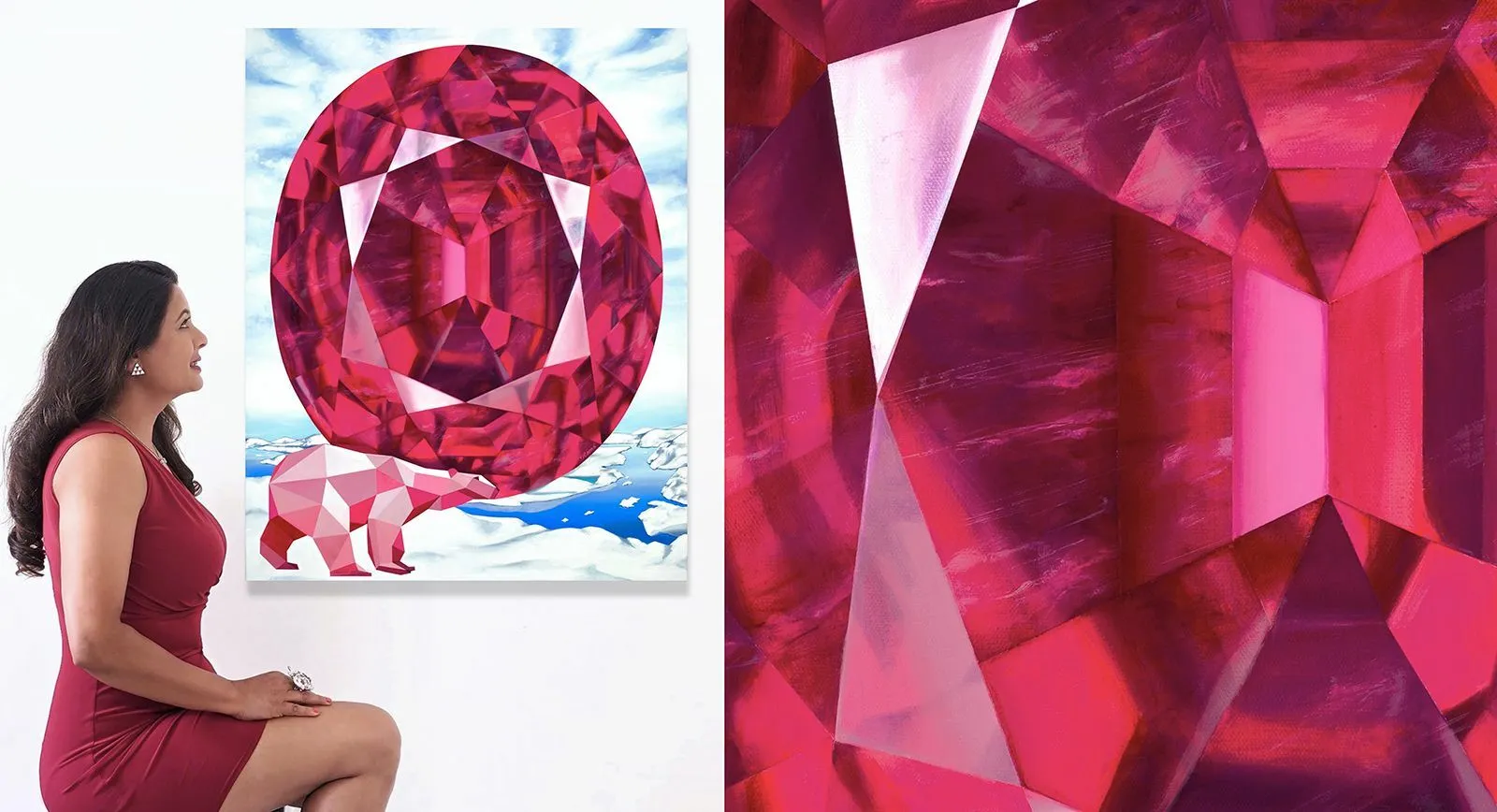
Jewellery NFTs: How Luxury Brands Are Embracing the Metaverse
Non-fungible tokens (NFTs) have been whipping the art world into a frenzy as digital natives seek coveted firsts and blockchain-backed provenance in the metaverse. Now, jewellery houses are getting on board as major players, including Tiffany & Co. and Bulgari. Here we explain more about NFT jewellery and what this means.
It is hard to escape the hype around NFTs – non-fungible tokens. The art and fashion scenes have quickly embraced this new digital art form, exploring its uses in the metaverse and how they can interplay with our real-world lives. The watch world has been similarly keen to play in this space, and now, too, it would seem, are luxury jewellery houses.

Tiffany & Co.
Tiffany & Co launches NFTiff
Tiffany & Co. made its debut in the world of NFTs in August. The jeweller targeted the CryptoPunk community – holders of a style of pixelated avatar sold as an NFT. The jeweller offered CryptoPunks the chance to transform their avatar into a custom necklace, which would be produced as an NFT and a real-world gold, diamond and gemstone necklace. To access one of the 250 made available, CryptoPunks had to purchase an NFTiff pass, which Tiffany & Co. created in collaboration with blockchain creator Chain. The price was 30 Ethereum (£41,600), a cryptocurrency popular for NFT transactions, and they sold out instantly. NFTiff was inspired by a real-world piece of jewellery, which was, in turn, inspired by the metaverse. Alexandre Arnault, Tiffany & Co., executive vice president of product and communications, owns a CryptoPunk avatar, which he reportedly bought for 160 Ethereum (£221,800) to use as his social media profile picture on Instagram. To celebrate, he charged the artisans at Tiffany & Co. with transforming his beanie-wearing CryptoPunk into a pendant with coloured enamel pixels set into rose gold and a baguette-cut sapphire and Mozambique rubies for the eyes.
Bulgari’s Beyond Wonder NFT Jewel
Luxury Italian jewellery house Bulgari has also been exploring jewellery NFTs. In Paris this June, it welcomed real-world visitors to explore its digital world at VivaTech, Europe’s largest start-up tech event. An avatar of the brand’s chief executive Jean-Christophe Babin encouraged visitors to step into a metaphysical representation of Rome and take in the views from the rooftop of a virtual Bulgari store. There, they could interact with reproductions of real jewels in what it described as a new way of shopping.
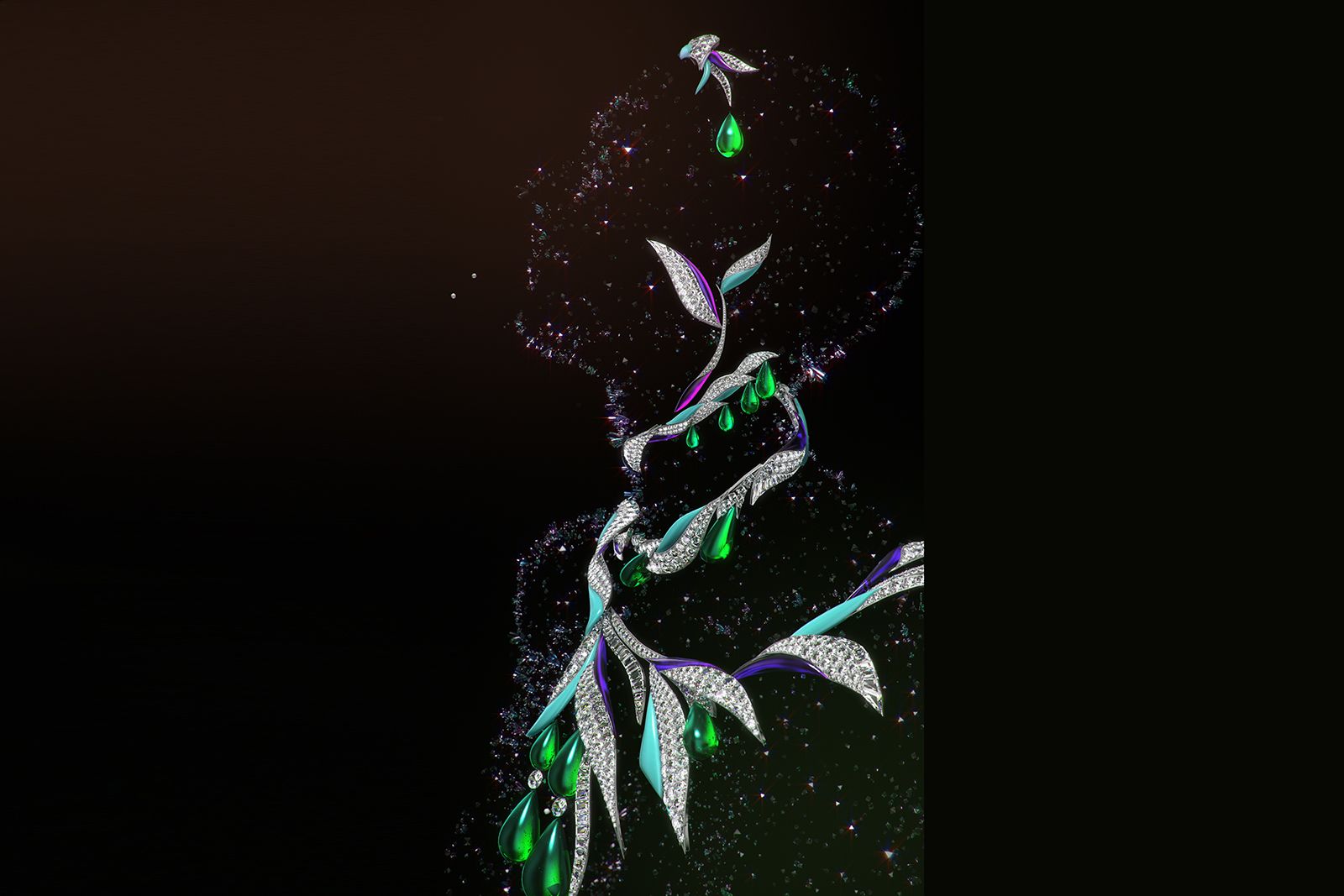
Bulgari’s Beyond Wonder NFT Jewel
As a luxury house that has made crossing boundaries a part of its DNA, it is intrinsic to our mentality to constantly expand the vision of our creative universe, says Babin. This is the start of a new journey, one that invites our customers to enjoy through the metaverse an entirely new luxury experience, of course inspired by our deeply rooted values of Italian excellence.
As well as digitising real jewels, Bulgari launched its first high jewellery NFT collection, Beyond Wonder, designed by the brand’s creative director Lucia Silvestri. The digital jewels wrap around the body, neck and face like a climbing plant. Of course, no real jewel would be worn this way, as it would be neither practical nor comfortable, but the metaverse is not beholden to such constraints on creativity.
NFT jewellery: the next phygital frontier?
For Amedeo Scognamiglio, jewellery NFTs are exciting new ground. The New York-based jeweller best known for his Amedeo brand of modern cameo jewellery launched a collection of Crypto Cameos as NFTs on the platform Exclusible. There were 1,000 available – each slightly different to reflect the covetable idiosyncrasies of handmade jewellery in the real world – and they all sold out within 24 hours, fetching 0.1 Ethereum (£140) each. London-based designer Simone Faurschou has integrated digital-first thinking into her work since launching her fine jewellery brand in 2020. The jewels in her Blockchain collection –18k gold blocks linked with chains in homage to the blockchain technology that underpins NFTs – are sold with NFT artworks that have their own value.
I explore if jewellery needs to be physical and tangible in order to hold real value, she says. As we’ve seen, especially in the last two years, digital art has exploded. I am not saying that digital jewellery is better than physical jewellery, but [I am] exploring how the artificial and natural can coexist in a world where the two are becoming more and more intertwined.
This sentiment is taking hold even in the traditional corners of the jewellery world. In September, Sotheby’s held its first sale dedicated to jewellery made by artists. Within that, there was a ‘phygital’ ring created by Francine Ballard of Metagolden, a Web3 store selling art, jewellery and fashion collaborations between brands or artists and digital creators. The winning bid would secure the gold and emerald design twice over – once as a real-world ring and as a digital version to adorn an avatar in the metaverse.
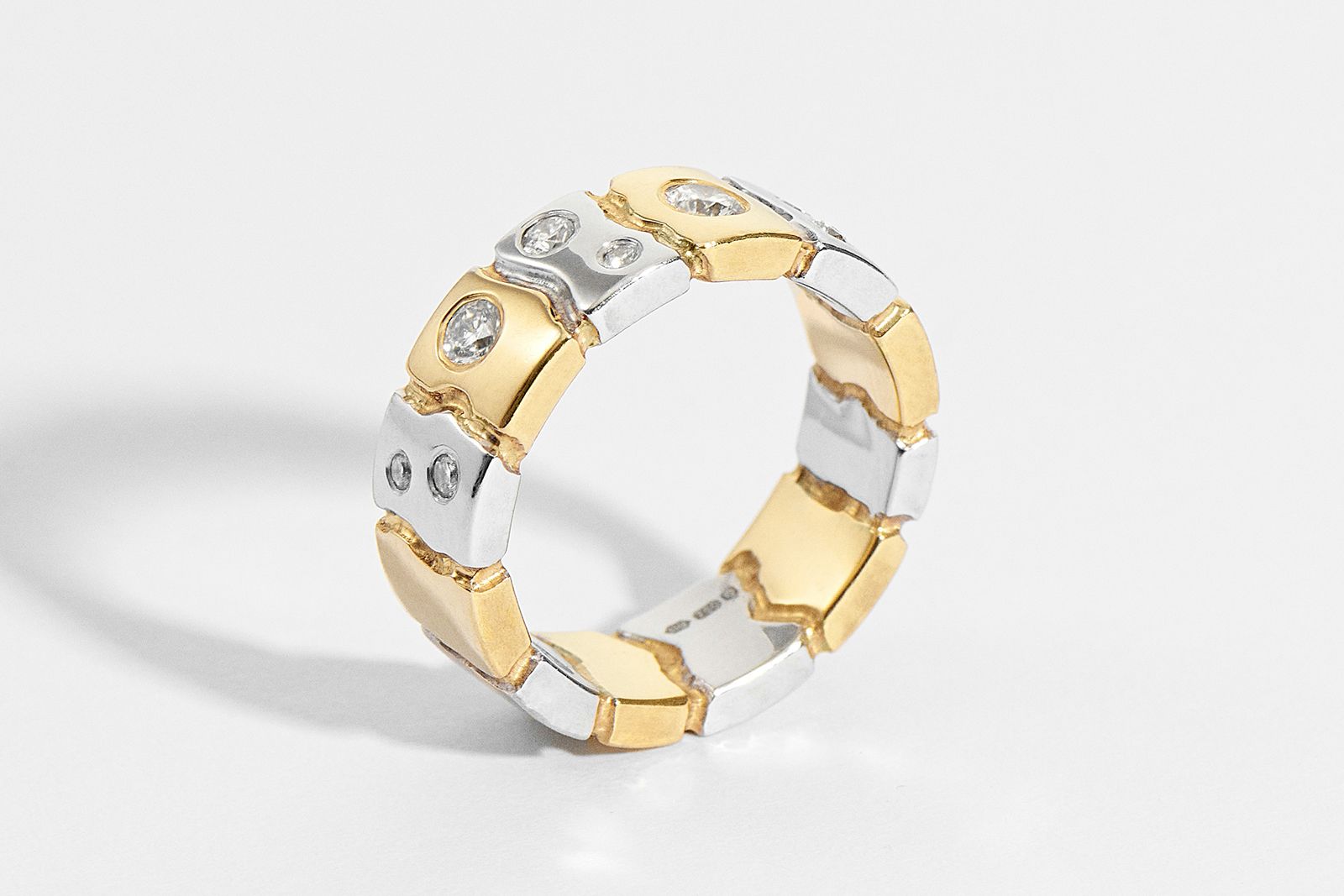
Simone Faurschou ring
Phygital – the concept of using technology to bridge the digital world with the physical world to create a unique interactive experience.
This concept of digital dressing is likely to become ever more important as we spend more time online, and artisans are seeking ways to ensure that the beauty of craft travels into this new future. “I hope even in the digital world, people will appreciate and feel the handmade aspect of my pieces,” says John-Paul Pietrus, founder and creative director of Francis de Lara, the world’s first fine jewellery-eyewear house. Pietrus teamed with Web3 fashion platform Brand New Vision to release NFTs of 3D moving videos of his serpentine, gem-encrusted Eve glasses.
Jewellery NFTs: Art for art’s sake
Some jewellers experimenting with NFTs are not doing so with wearability in mind – be that in the physical or digital world – but simply as a new way of expressing themselves artistically and to jump on the trend. For example, British jeweller Hirsh released a digital artwork to celebrate Her Majesty the Queen’s Platinum Jubilee on OpenSea, a marketplace for crypto-collectables and NFTs. It recreates the image of a stamp in the jeweller’s brand colours, with a silhouette of the queen adorned with an emerald and diamond earring and four more emeralds demarcating her crown.
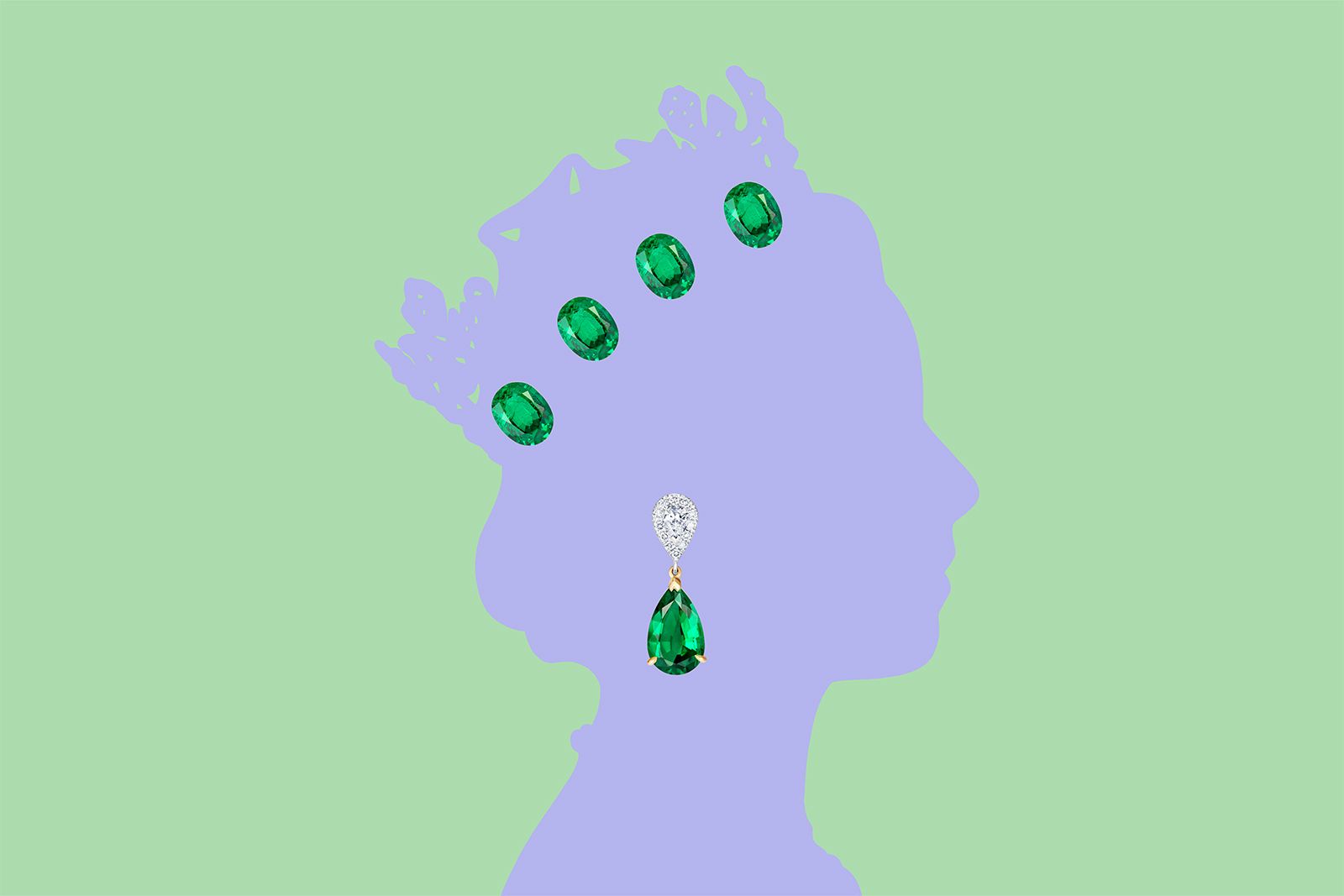
Hirsh digital artwork celebrating Her Majesty the Queen’s Platinum Jubilee
Jewellery designer Reena Ahluwalia teamed with ethical gemstone miner Greenland Ruby in May to raise money for a good cause with NFTs. Ahluwalia is a keen artist, specialising in paintings of gems, and created an artwork titled Fire Under Ice featuring a realistic paint-up of a ruby from Greenland. Raffle tickets were sold at $150 each to win the painting, which she valued at $10,000, but each entrant – there were only 500 tickets available – was also gifted an NFT of the artwork.
I am a lover of tech, says Ahluwalia. When I first came across NFTs, it immediately clicked. As an artist creating physical artefacts – like jewellery, paintings, and sculptures – it felt organic for me to expand my art into digital expression. I also wanted my NFTs to share my activism and raise funds for causes I believe in. NFTs have huge potential.
FAQs: A beginner’s guide to NFTs
What is an NFT?
NFT is the abbreviation of Non-Fungible Token. ‘Fungible’ means that the currencies are of equal value and can be traded and exchanged. Each NFT, however, has a unique digital signature, meaning that no single NFT is equal to another, so they cannot be traded or exchanged. Usually sold in limited runs or as one-offs, NFTs are digital assets that represent real-world objects. They can come in many forms, from music to original artwork to GIFs. When you buy an NFT, you buy the exclusive ownership of the object. Each purchase is recorded on a blockchain, making altering and counterfeiting NFTs extremely difficult.
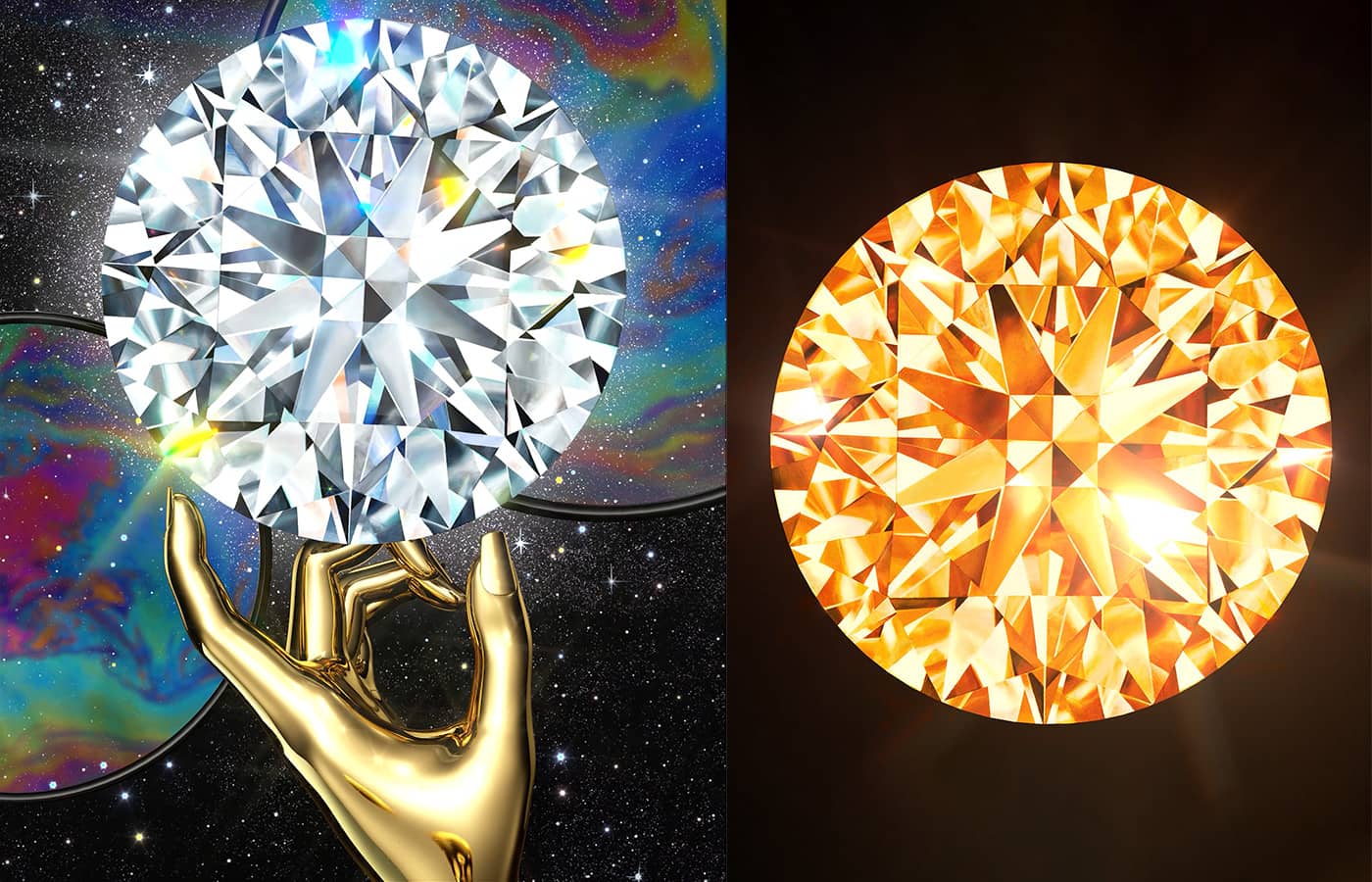
Reena Ahluwalia Diamond Vision and Orange Diamond Verse NFTs
How do NFTs work?
Similar to the auctions of the real world, the value of NFTs is determined by demand. The majority exist on Ethereum’s blockchain, which records all transactions. Anyone can view the blockchain, meaning the traceability of ownership can be easily verified, although owners are allowed to use pseudonyms to retain anonymity if they wish. Every new buyer receives a digital certification of their ownership. The original creator of the NFT will receive a 10% commission on each sale, as does the platform, with the rest of the revenue going to the seller.
Why are NFTs so popular?
Although you can download any image you want from the internet, the allure of owning an NFT is the same as provenance in the collecting world. Reproductions of Banksy’s artworks can be found in stores across the globe, but collectors pay enormous sums for the real thing. Putting it simply, there’s nothing like owning the original.
How can creators benefit from NFTs?
Whilst anyone can create an NFT, the provenance and history of the seller are just as important in the digital market as in the outside world, meaning traceability and security in the market is essential. In addition, artists can programme royalties into the asset, ensuring that each time it’s sold, they will receive a percentage, which usually doesn’t happen beyond the first sale in the real world. Brands embracing NFTs are now starting to use them to better keep in touch with clients, too, offering extra authenticity and services, exclusive offers and invites.
How much do NFTs cost?
The cost of NFT can range from a few pounds to millions. One of the most famous NFT sales was for digital artist Beeple’s Everydays: The First 5000 Days. Before the auction, Beeple hadn’t found much financial success with his artwork. After gaining a significant online following for his prolific Everydays project, the NFT was auctioned off by Christie’s for a staggering $69million.
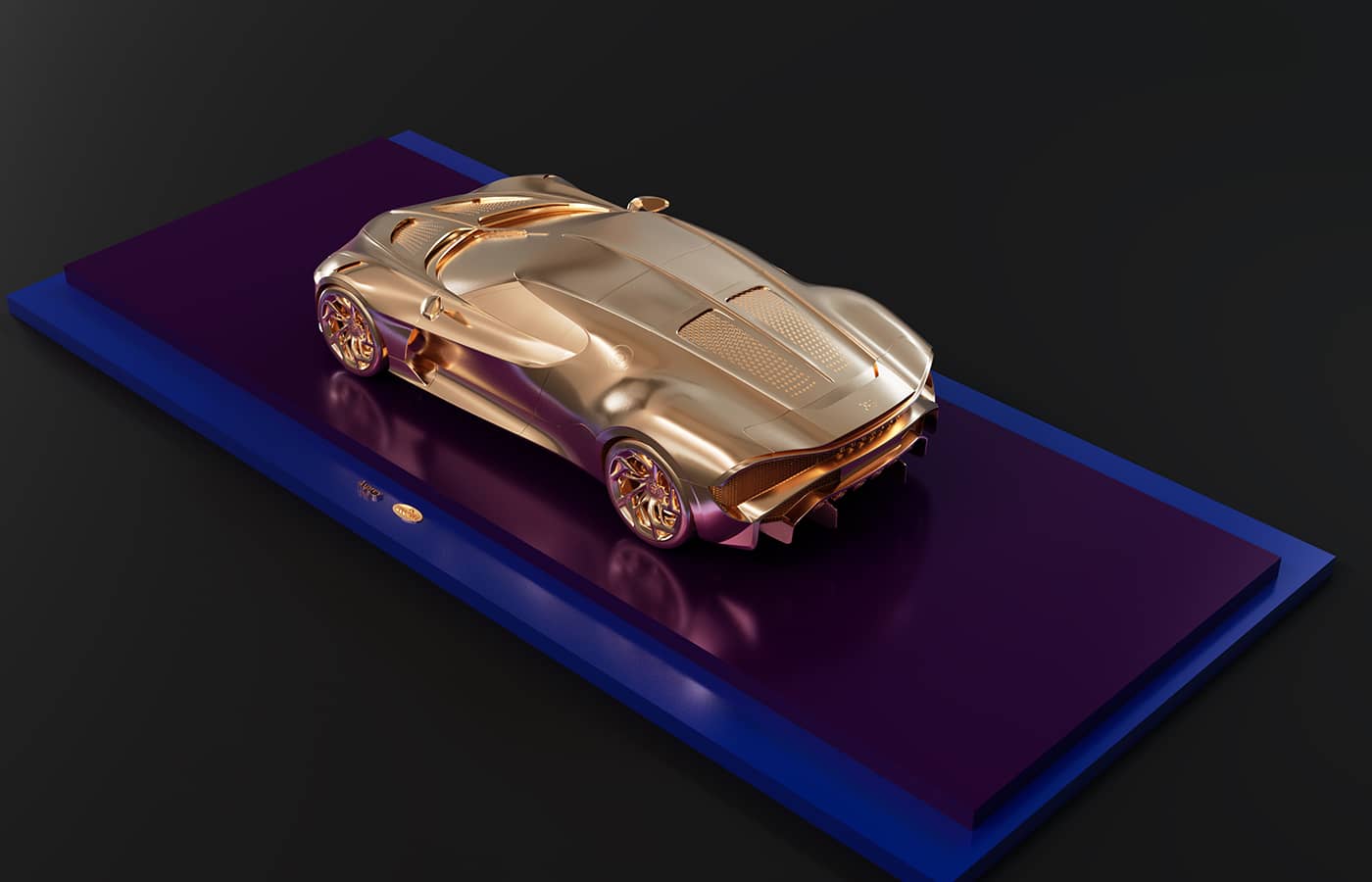
Amedeo Scognamiglio Gold Car scultpure
How do I buy an NFT?
First, you’ll need a digital wallet that can store NFTs and cryptocurrencies. Next, purchase the cryptocurrency used for the NFT you want; it will most likely be Ethereum, but others do exist. With most purchases, there will be a transactional fee. NFT marketplaces like OpenSea and Rarible are a good place to start.
Whether you are a jewellery designer looking for a new creative avenue or a customer wanting to own something unique, jewellery NFTs are worth exploring. We are following closely this growing area of high jewellery and luxury art. Will you be joining us on this journey?

WORDS
Katerina Perez is a jewellery insider, journalist and brand consultant with more than 15 years’ experience in the jewellery sector. Paris-based, Katerina has worked as a freelance journalist and content editor since 2011, writing articles for international publications. To share her jewellery knowledge and expertise, Katerina founded this website and launched her @katerina_perez Instagram in 2013.

Jewellery NFTs: How Luxury Brands Are Embracing the Metaverse
Non-fungible tokens (NFTs) have been whipping the art world into a frenzy as digital natives seek coveted firsts and blockchain-backed provenance in the metaverse. Now, jewellery houses are getting on board as major players, including Tiffany & Co. and Bulgari. Here we explain more about NFT jewellery and what this means.
It is hard to escape the hype around NFTs – non-fungible tokens. The art and fashion scenes have quickly embraced this new digital art form, exploring its uses in the metaverse and how they can interplay with our real-world lives. The watch world has been similarly keen to play in this space, and now, too, it would seem, are luxury jewellery houses.

Tiffany & Co.
Tiffany & Co launches NFTiff
Tiffany & Co. made its debut in the world of NFTs in August. The jeweller targeted the CryptoPunk community – holders of a style of pixelated avatar sold as an NFT. The jeweller offered CryptoPunks the chance to transform their avatar into a custom necklace, which would be produced as an NFT and a real-world gold, diamond and gemstone necklace. To access one of the 250 made available, CryptoPunks had to purchase an NFTiff pass, which Tiffany & Co. created in collaboration with blockchain creator Chain. The price was 30 Ethereum (£41,600), a cryptocurrency popular for NFT transactions, and they sold out instantly. NFTiff was inspired by a real-world piece of jewellery, which was, in turn, inspired by the metaverse. Alexandre Arnault, Tiffany & Co., executive vice president of product and communications, owns a CryptoPunk avatar, which he reportedly bought for 160 Ethereum (£221,800) to use as his social media profile picture on Instagram. To celebrate, he charged the artisans at Tiffany & Co. with transforming his beanie-wearing CryptoPunk into a pendant with coloured enamel pixels set into rose gold and a baguette-cut sapphire and Mozambique rubies for the eyes.
Bulgari’s Beyond Wonder NFT Jewel
Luxury Italian jewellery house Bulgari has also been exploring jewellery NFTs. In Paris this June, it welcomed real-world visitors to explore its digital world at VivaTech, Europe’s largest start-up tech event. An avatar of the brand’s chief executive Jean-Christophe Babin encouraged visitors to step into a metaphysical representation of Rome and take in the views from the rooftop of a virtual Bulgari store. There, they could interact with reproductions of real jewels in what it described as a new way of shopping.

Bulgari’s Beyond Wonder NFT Jewel
As a luxury house that has made crossing boundaries a part of its DNA, it is intrinsic to our mentality to constantly expand the vision of our creative universe, says Babin. This is the start of a new journey, one that invites our customers to enjoy through the metaverse an entirely new luxury experience, of course inspired by our deeply rooted values of Italian excellence.
As well as digitising real jewels, Bulgari launched its first high jewellery NFT collection, Beyond Wonder, designed by the brand’s creative director Lucia Silvestri. The digital jewels wrap around the body, neck and face like a climbing plant. Of course, no real jewel would be worn this way, as it would be neither practical nor comfortable, but the metaverse is not beholden to such constraints on creativity.
NFT jewellery: the next phygital frontier?
For Amedeo Scognamiglio, jewellery NFTs are exciting new ground. The New York-based jeweller best known for his Amedeo brand of modern cameo jewellery launched a collection of Crypto Cameos as NFTs on the platform Exclusible. There were 1,000 available – each slightly different to reflect the covetable idiosyncrasies of handmade jewellery in the real world – and they all sold out within 24 hours, fetching 0.1 Ethereum (£140) each. London-based designer Simone Faurschou has integrated digital-first thinking into her work since launching her fine jewellery brand in 2020. The jewels in her Blockchain collection –18k gold blocks linked with chains in homage to the blockchain technology that underpins NFTs – are sold with NFT artworks that have their own value.
I explore if jewellery needs to be physical and tangible in order to hold real value, she says. As we’ve seen, especially in the last two years, digital art has exploded. I am not saying that digital jewellery is better than physical jewellery, but [I am] exploring how the artificial and natural can coexist in a world where the two are becoming more and more intertwined.
This sentiment is taking hold even in the traditional corners of the jewellery world. In September, Sotheby’s held its first sale dedicated to jewellery made by artists. Within that, there was a ‘phygital’ ring created by Francine Ballard of Metagolden, a Web3 store selling art, jewellery and fashion collaborations between brands or artists and digital creators. The winning bid would secure the gold and emerald design twice over – once as a real-world ring and as a digital version to adorn an avatar in the metaverse.

Simone Faurschou ring
Phygital – the concept of using technology to bridge the digital world with the physical world to create a unique interactive experience.
This concept of digital dressing is likely to become ever more important as we spend more time online, and artisans are seeking ways to ensure that the beauty of craft travels into this new future. “I hope even in the digital world, people will appreciate and feel the handmade aspect of my pieces,” says John-Paul Pietrus, founder and creative director of Francis de Lara, the world’s first fine jewellery-eyewear house. Pietrus teamed with Web3 fashion platform Brand New Vision to release NFTs of 3D moving videos of his serpentine, gem-encrusted Eve glasses.
Jewellery NFTs: Art for art’s sake
Some jewellers experimenting with NFTs are not doing so with wearability in mind – be that in the physical or digital world – but simply as a new way of expressing themselves artistically and to jump on the trend. For example, British jeweller Hirsh released a digital artwork to celebrate Her Majesty the Queen’s Platinum Jubilee on OpenSea, a marketplace for crypto-collectables and NFTs. It recreates the image of a stamp in the jeweller’s brand colours, with a silhouette of the queen adorned with an emerald and diamond earring and four more emeralds demarcating her crown.

Hirsh digital artwork celebrating Her Majesty the Queen’s Platinum Jubilee
Jewellery designer Reena Ahluwalia teamed with ethical gemstone miner Greenland Ruby in May to raise money for a good cause with NFTs. Ahluwalia is a keen artist, specialising in paintings of gems, and created an artwork titled Fire Under Ice featuring a realistic paint-up of a ruby from Greenland. Raffle tickets were sold at $150 each to win the painting, which she valued at $10,000, but each entrant – there were only 500 tickets available – was also gifted an NFT of the artwork.
I am a lover of tech, says Ahluwalia. When I first came across NFTs, it immediately clicked. As an artist creating physical artefacts – like jewellery, paintings, and sculptures – it felt organic for me to expand my art into digital expression. I also wanted my NFTs to share my activism and raise funds for causes I believe in. NFTs have huge potential.
FAQs: A beginner’s guide to NFTs
What is an NFT?
NFT is the abbreviation of Non-Fungible Token. ‘Fungible’ means that the currencies are of equal value and can be traded and exchanged. Each NFT, however, has a unique digital signature, meaning that no single NFT is equal to another, so they cannot be traded or exchanged. Usually sold in limited runs or as one-offs, NFTs are digital assets that represent real-world objects. They can come in many forms, from music to original artwork to GIFs. When you buy an NFT, you buy the exclusive ownership of the object. Each purchase is recorded on a blockchain, making altering and counterfeiting NFTs extremely difficult.

Reena Ahluwalia Diamond Vision and Orange Diamond Verse NFTs
How do NFTs work?
Similar to the auctions of the real world, the value of NFTs is determined by demand. The majority exist on Ethereum’s blockchain, which records all transactions. Anyone can view the blockchain, meaning the traceability of ownership can be easily verified, although owners are allowed to use pseudonyms to retain anonymity if they wish. Every new buyer receives a digital certification of their ownership. The original creator of the NFT will receive a 10% commission on each sale, as does the platform, with the rest of the revenue going to the seller.
Why are NFTs so popular?
Although you can download any image you want from the internet, the allure of owning an NFT is the same as provenance in the collecting world. Reproductions of Banksy’s artworks can be found in stores across the globe, but collectors pay enormous sums for the real thing. Putting it simply, there’s nothing like owning the original.
How can creators benefit from NFTs?
Whilst anyone can create an NFT, the provenance and history of the seller are just as important in the digital market as in the outside world, meaning traceability and security in the market is essential. In addition, artists can programme royalties into the asset, ensuring that each time it’s sold, they will receive a percentage, which usually doesn’t happen beyond the first sale in the real world. Brands embracing NFTs are now starting to use them to better keep in touch with clients, too, offering extra authenticity and services, exclusive offers and invites.
How much do NFTs cost?
The cost of NFT can range from a few pounds to millions. One of the most famous NFT sales was for digital artist Beeple’s Everydays: The First 5000 Days. Before the auction, Beeple hadn’t found much financial success with his artwork. After gaining a significant online following for his prolific Everydays project, the NFT was auctioned off by Christie’s for a staggering $69million.

Amedeo Scognamiglio Gold Car scultpure
How do I buy an NFT?
First, you’ll need a digital wallet that can store NFTs and cryptocurrencies. Next, purchase the cryptocurrency used for the NFT you want; it will most likely be Ethereum, but others do exist. With most purchases, there will be a transactional fee. NFT marketplaces like OpenSea and Rarible are a good place to start.
Whether you are a jewellery designer looking for a new creative avenue or a customer wanting to own something unique, jewellery NFTs are worth exploring. We are following closely this growing area of high jewellery and luxury art. Will you be joining us on this journey?

WORDS
Katerina Perez is a jewellery insider, journalist and brand consultant with more than 15 years’ experience in the jewellery sector. Paris-based, Katerina has worked as a freelance journalist and content editor since 2011, writing articles for international publications. To share her jewellery knowledge and expertise, Katerina founded this website and launched her @katerina_perez Instagram in 2013.
